The first long trip of the year for Grace was from Seattle to Friday Harbor – a trip that I had been preparing for 6 weeks prior in a whirlwind of activity. Projects included adding a Raymarine Quantum radar, radar pole, new instruments and sensors, fixing the VHF radio problems, and other items from a long list I developed last year.
For the trip I had two sets of crew – two friends who went up with me over Memorial Day Weekend, and my husband and friend returning with me a week or so later – both groups would be arriving or departing Friday Harbor via Kenmore Air, a great way we’ve found to have people participate in longer voyages without having to commit to a week or more and getting a fun view from the plane on the way there/back.
The projects were finished the day before (always a bad sign), boat provisioned, and I departed with Jake, JJ and myself heading towards Pt. Hudson marina on day 1.
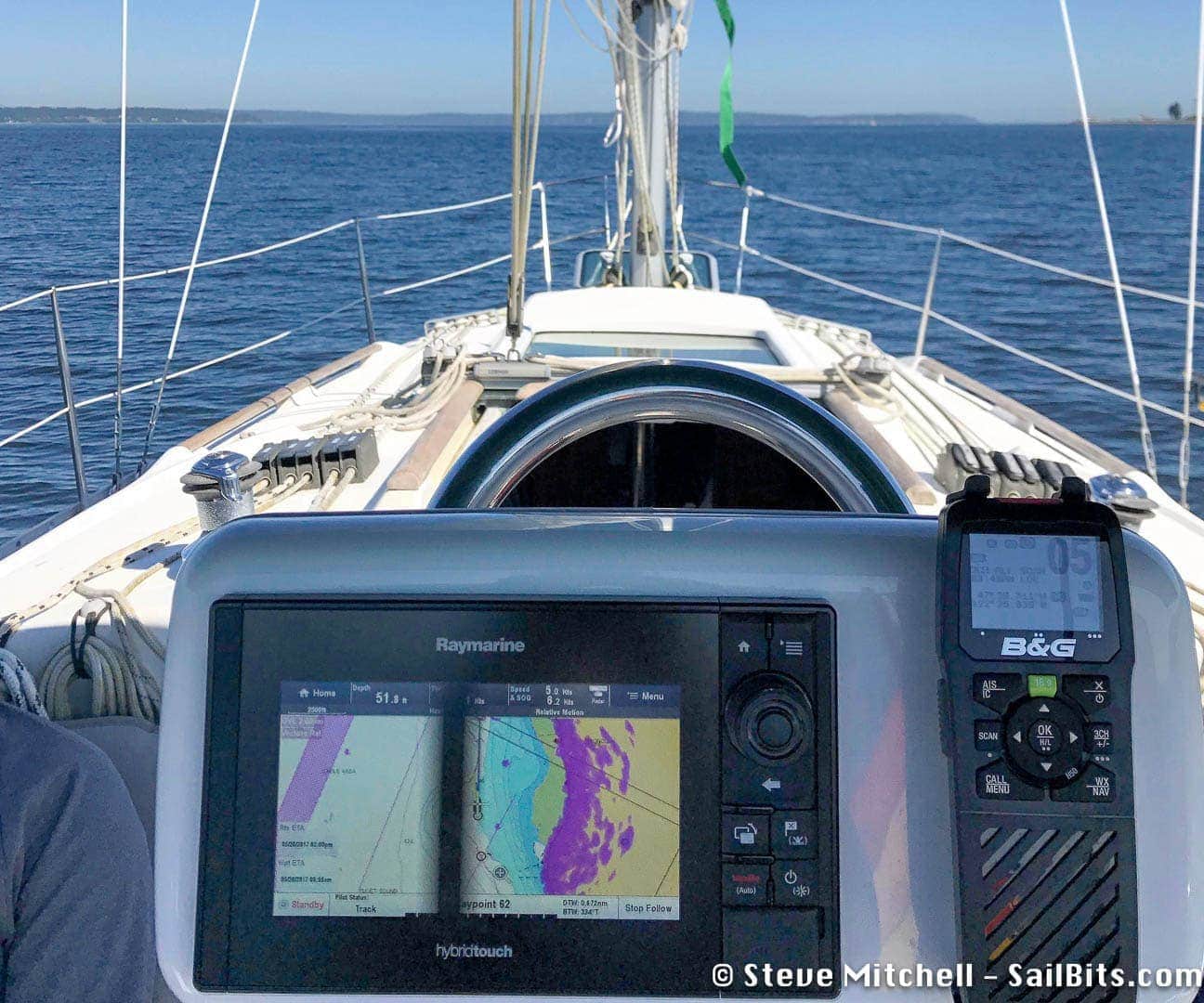
This was the first extended test for the Raymarine Quantum radar and it performed pretty well. I was still getting used to the various options and plan on writing up a more thorough review in the next week with better screen shots than the above. It did help us spot our next visitor…
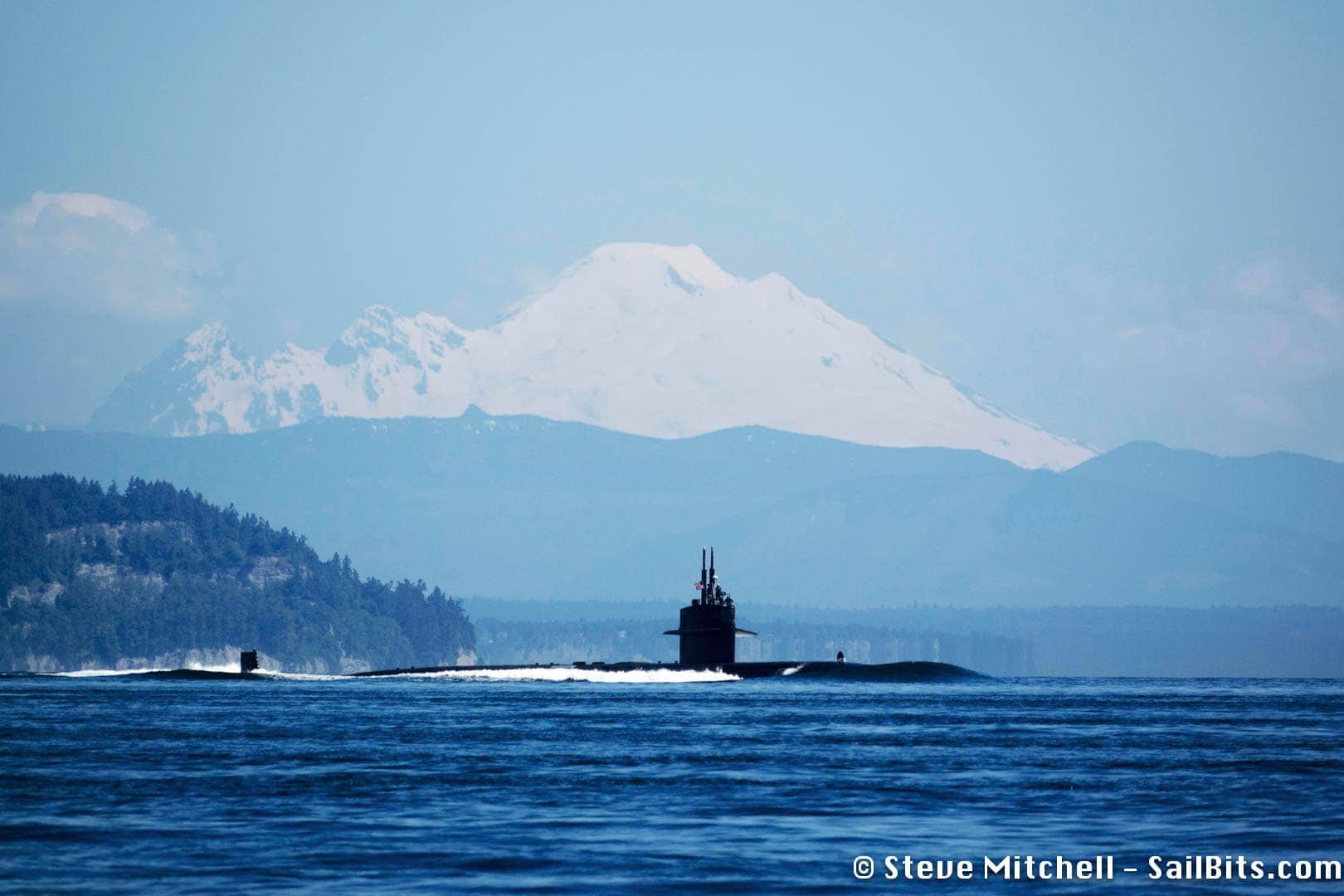
What I believe is the USS Dallas (SSN-700) heading south to Puget Sound Naval Shipyard on her final voyage
Near the Kingston ferry crossing, we spotted something in the distance that the radar saw clearly, and was not on AIS for obvious reasons. I believe this was the USS Dallasheading to Puget Sound Naval Shipyard on her final transit. Several news agencies covered it the same day indicating that it had reached the end of service life and was being decommissioned.
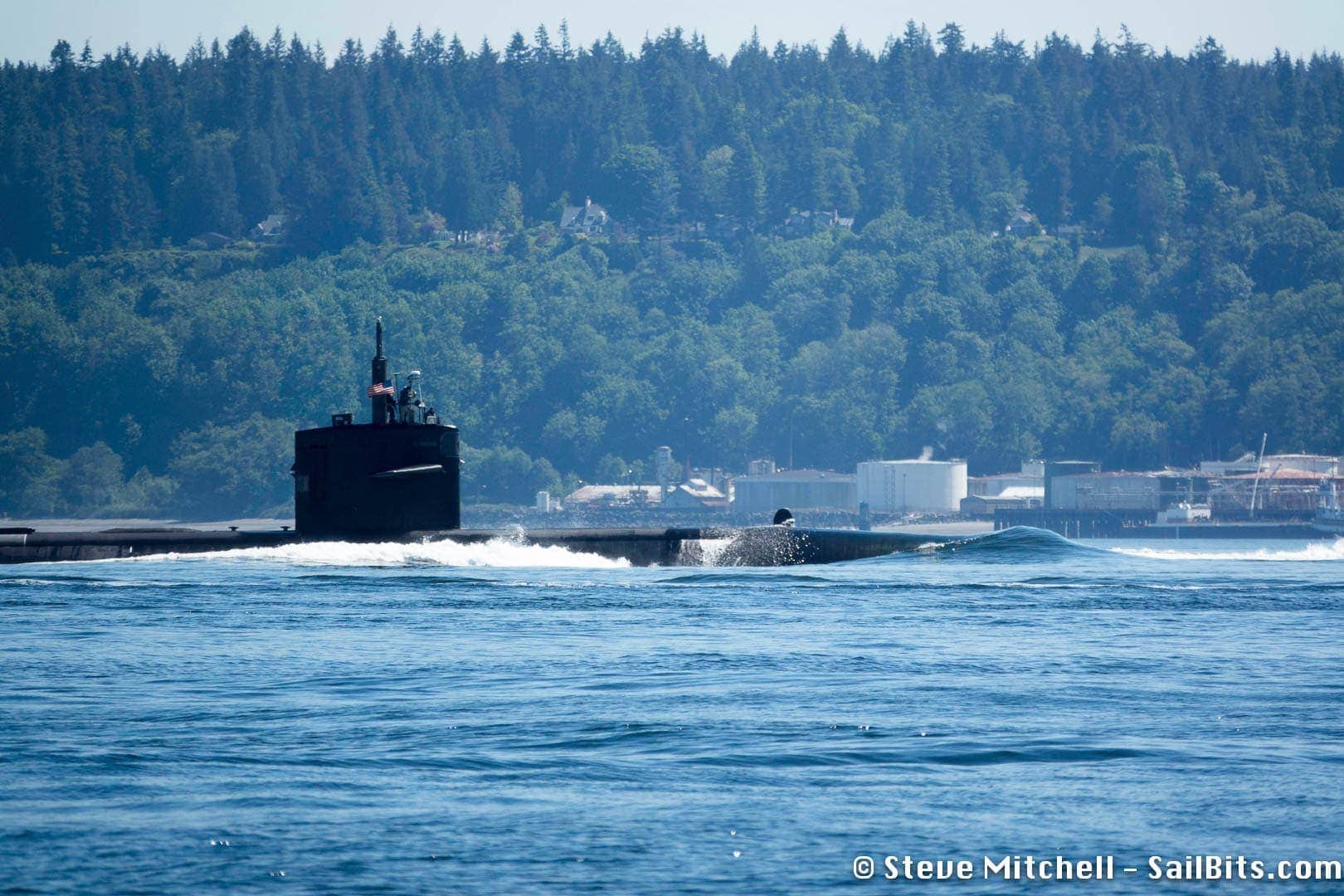
The Dallas is familiar to a nerd like me as being the sub used in the Tom Clancy novel and subsequent movie the Hunt for Red October.
Around this time, I noticed that there was water in one of the bilges near the refrigerator – Grace has had completely dry bilges with the exception of a little weeping from the prop shaft. After investigating, I found more water in the forward bilge and started getting more concerned. After troubleshooting for a while, pumping the water into the main bilge and overboard, I came to the conclusion that it was probably the water I let in while changing my speed sensor the day before. Careful monitoring both the rest of the day and the day after didn’t show any further water coming in, and so I suspect that guess was correct. Maybe not changing a speed sensor the day before a long trip is good advice?
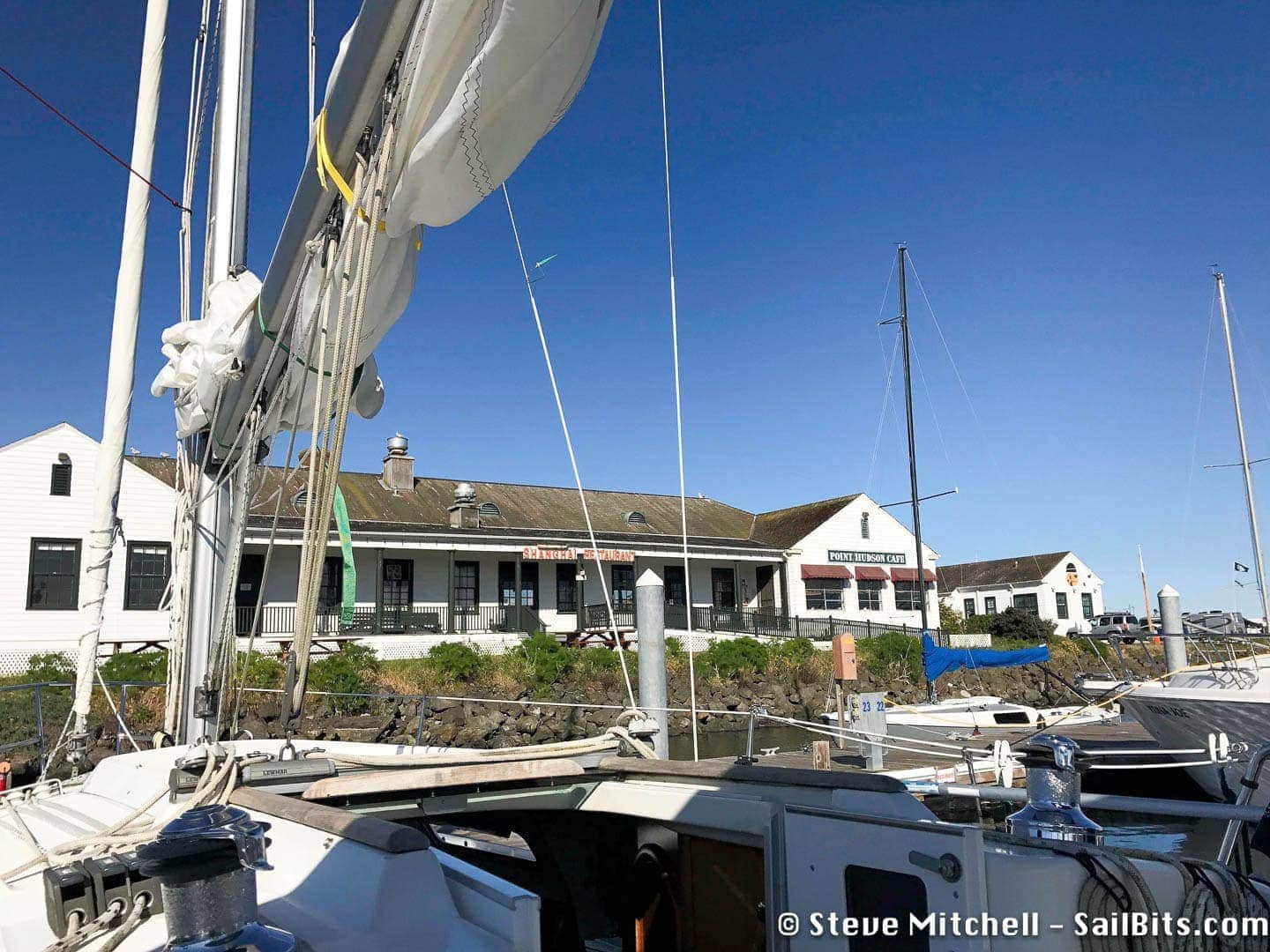
The rest of the journey was fairly uneventful, other than the tides and currents being against us most of the way. I tried to plan as best as I could, but at one point we were stuck in Admiralty Inlet near Nodule Point making only about 1 knot of headway. I tried to find a counter current almost all the way back and across the channel to no avail. We arrived at Point Hudson Marina around 6pm after a very hot day on the water with little wind. The tides and currents would come back to haunt us on day 2.
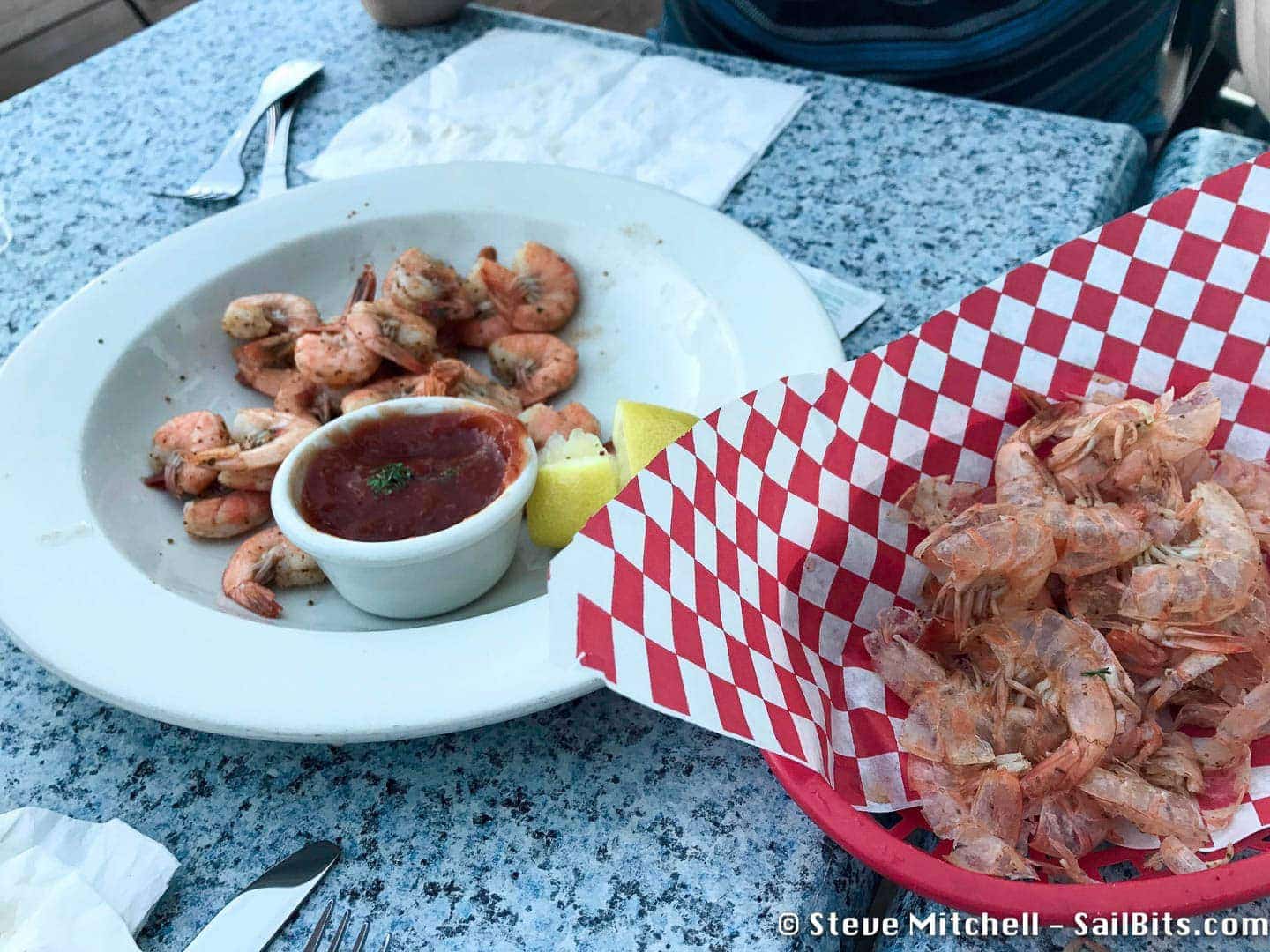
We had a nice dinner at Doc’s Marina Grill including some peel and eat shrimp, and then wandered into Pt. Townsend for some evening activities.
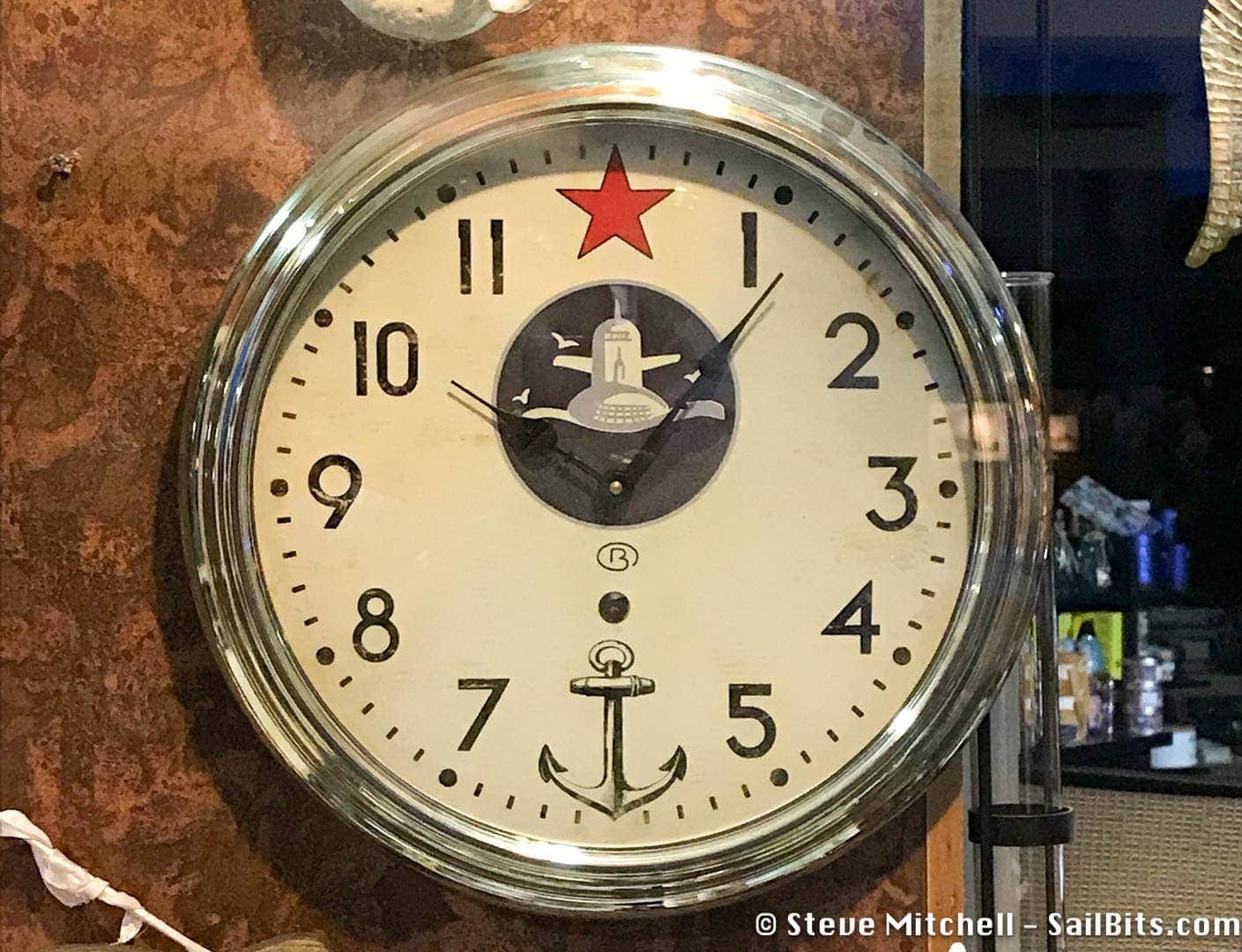
I found a shop with a bunch of clocks, including this nautical one above which kept our theme of submarines going for the day.
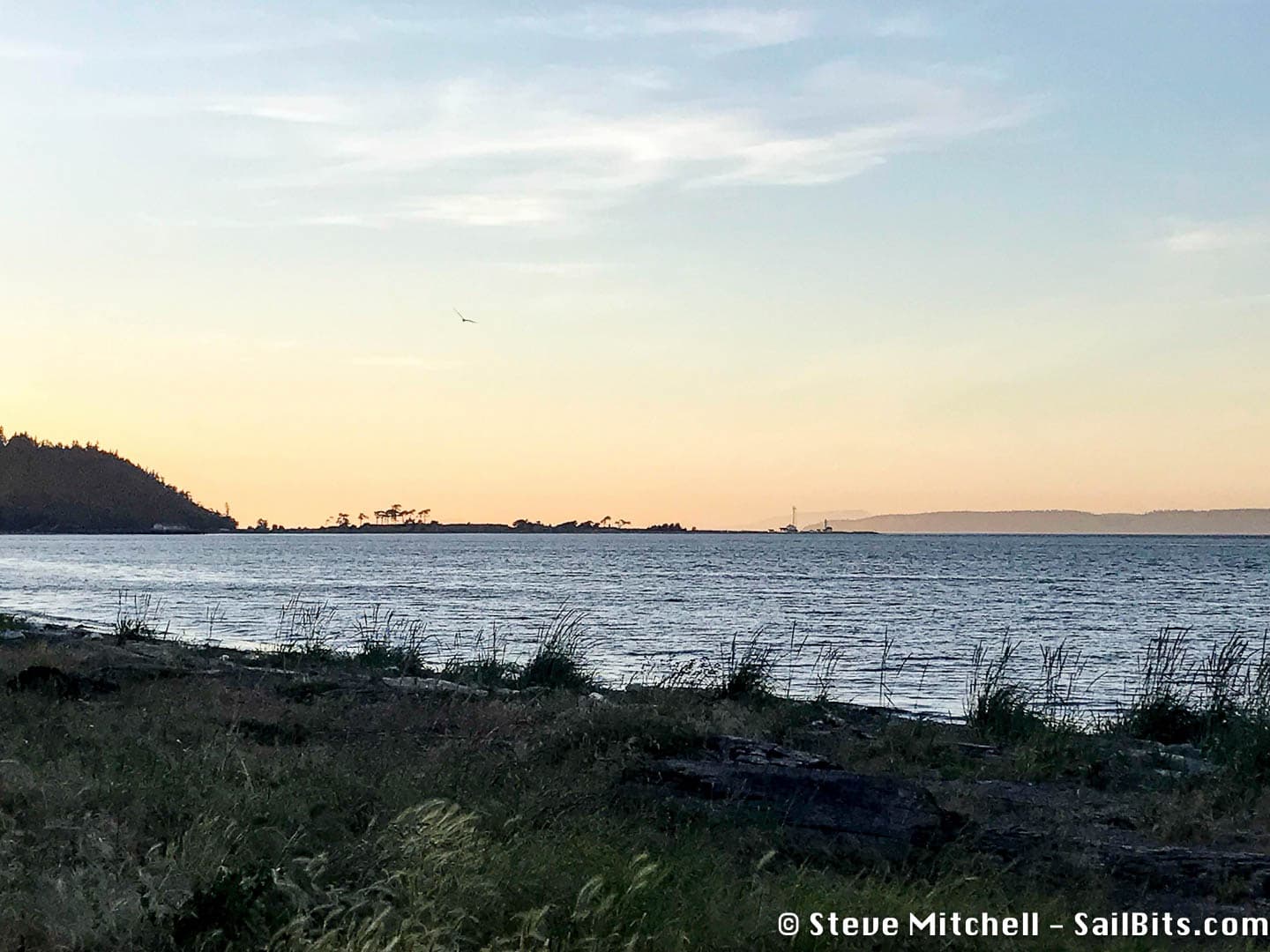
The sunset was amazing out towards the Strait of Juan de Fuca, which we intended on crossing in the morning.
Day 2 started early, and a new moon tide was well in effect – only 9 feet of depth (or 5 feet under our keel!) while departing the marina. We watched one other sailboat of similar size leave first to make sure there was enough water. The Point Hudson marina has a piling entry with very limited visibility and a 45 degree turn, which was quite unnerving with such little water underneath – I’ve never seen it that shallow there!
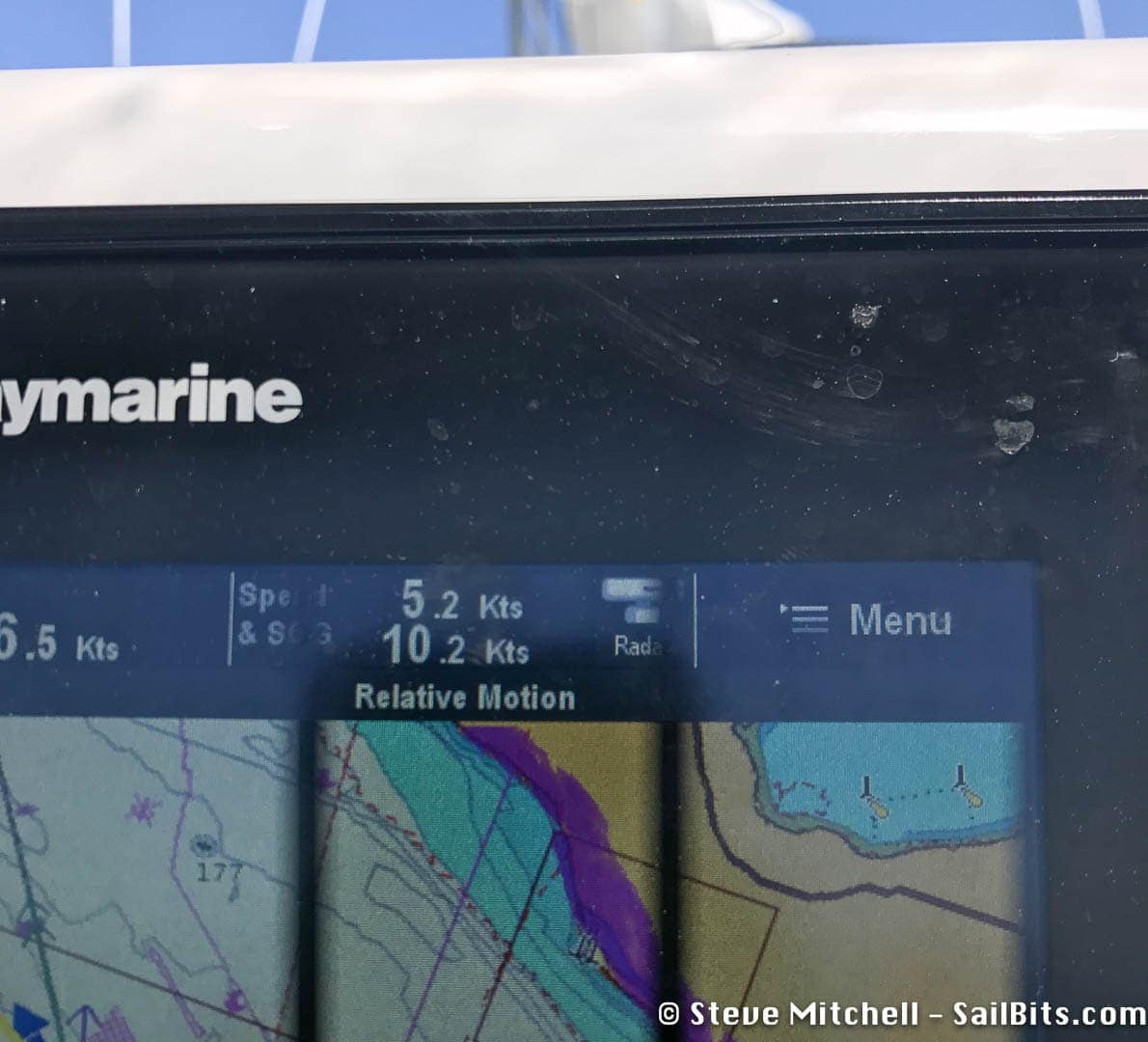
Passing Point Wilson, the current was not only in our favor, but doubled our speed! This lasted for quite a while, and was nice to have on our side after the 1 knot nonsense the day before. Again, the current would come back to haunt us later in the day.
We enjoyed the crossing and the super hot weather – almost 80 degrees on the water, and the guys were out enjoying the sun, the Olympic mountains behind us, and the San Juans starting to materialize on the horizon.
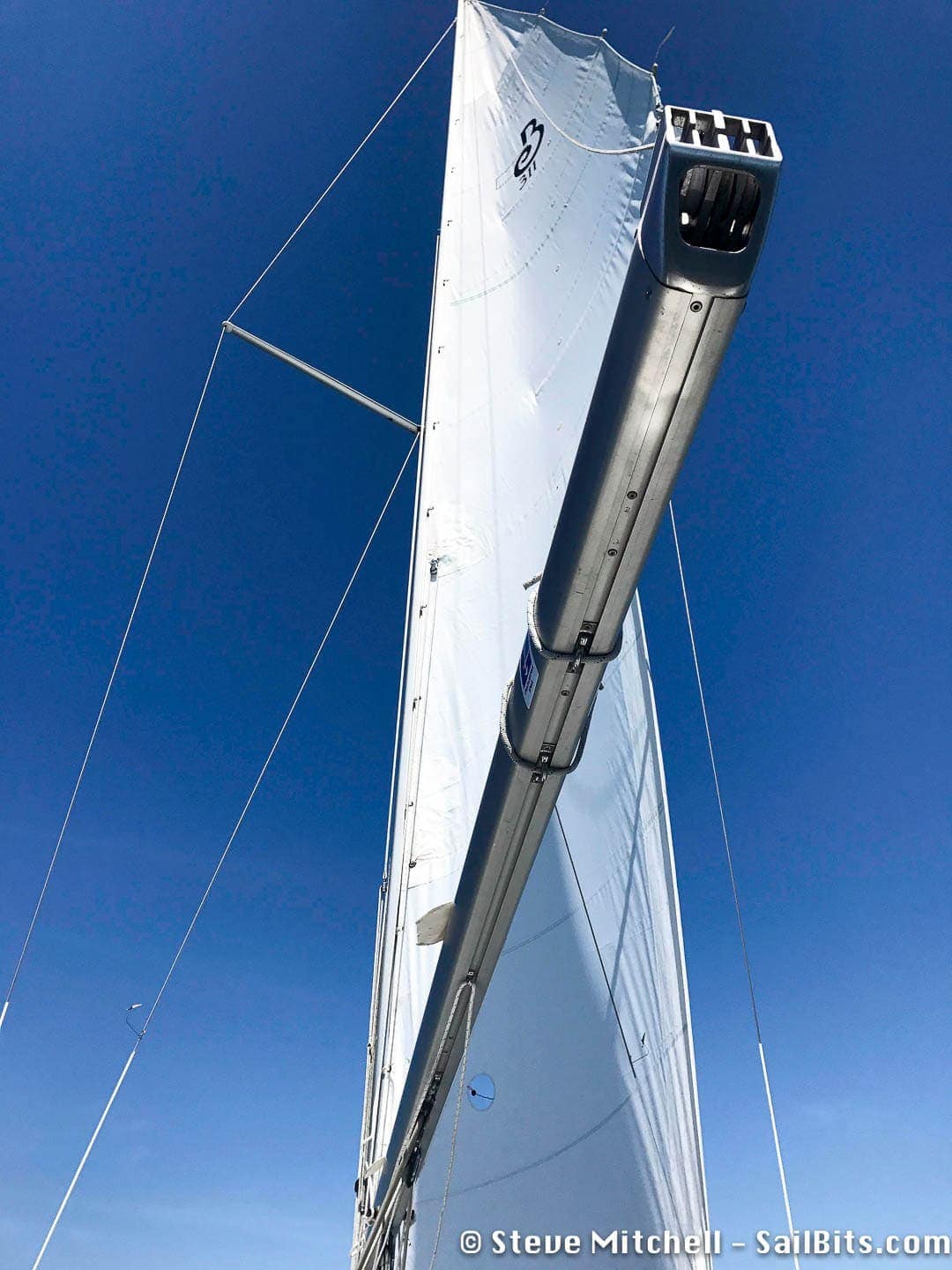
We were even able to put up the sails for about an hour and a half and scoot along at about 4 knots.
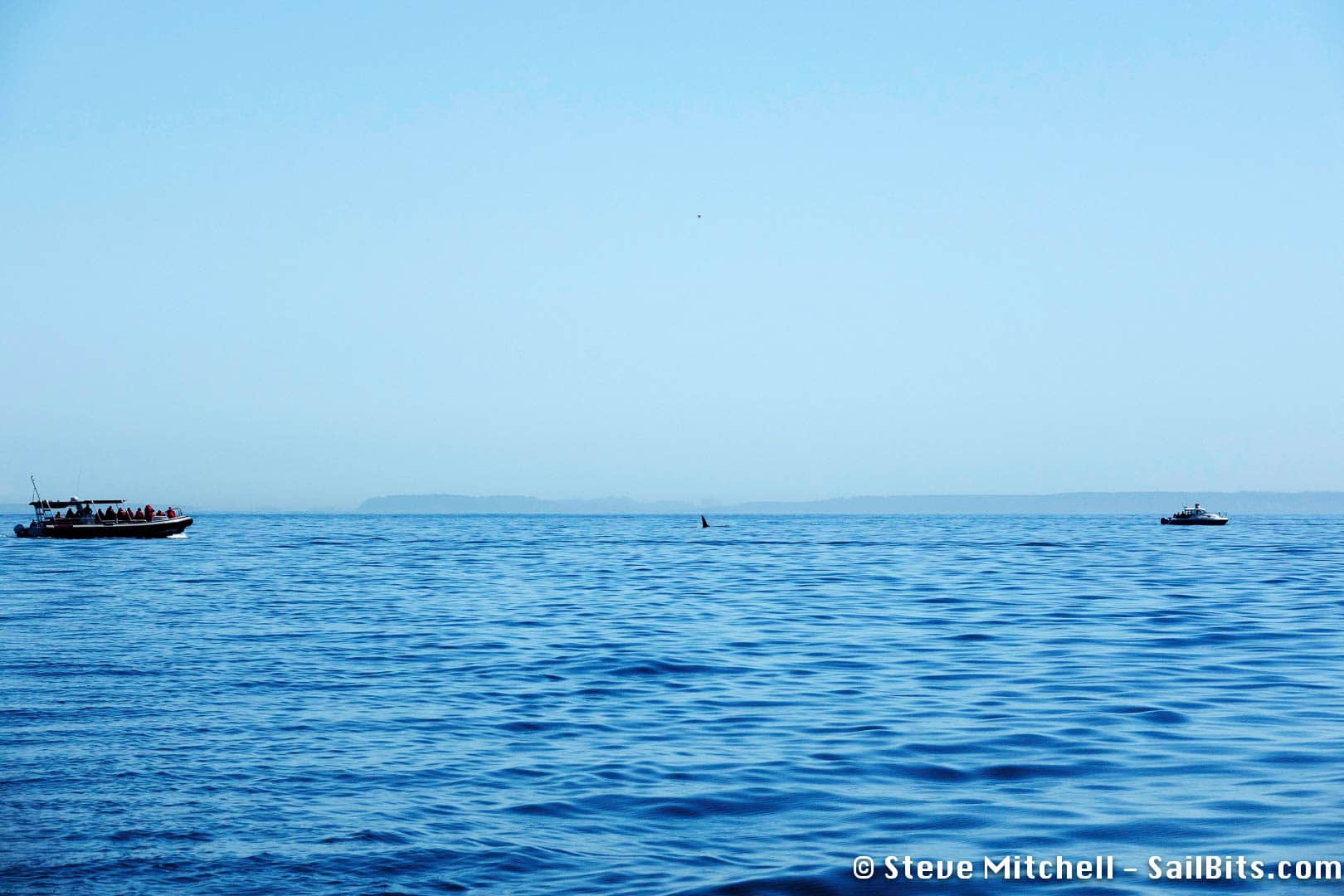
Right before Cattle Pass we saw a bunch of boats to the east and figured it was orcas – we were not disappointed!
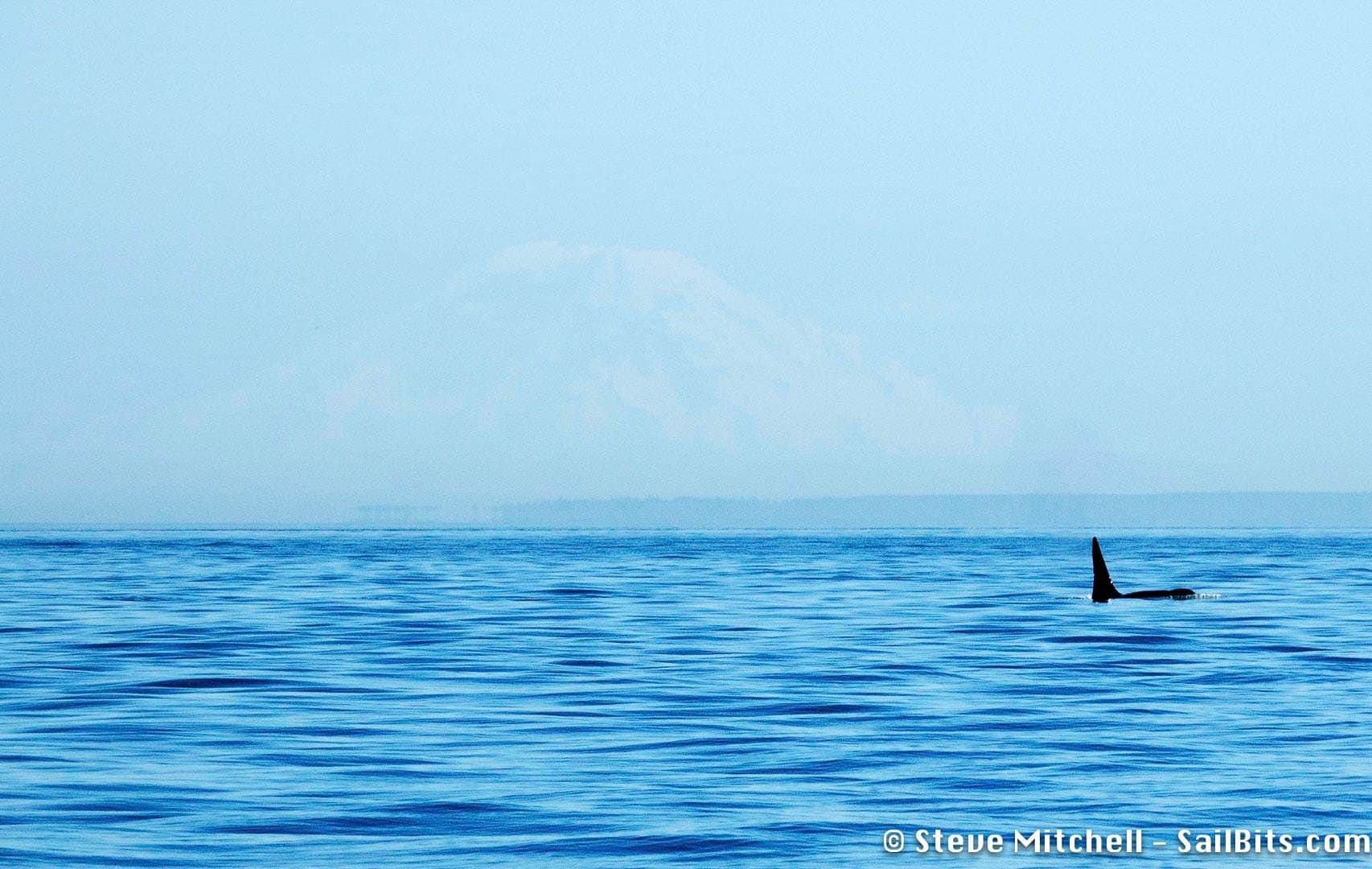
We kept well away from the whales and boats and took some pics with my long zoom and enjoyed watching from afar.
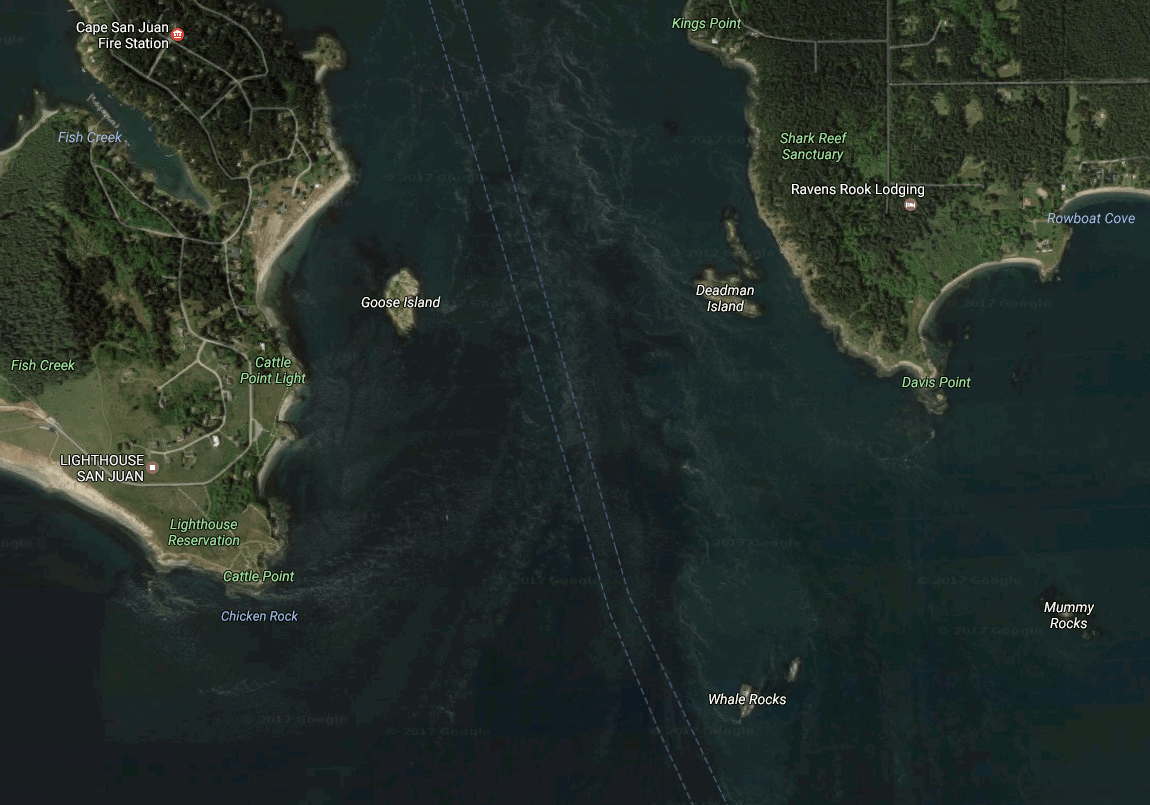
Cattle Pass via Google Maps
The drama of the day ensued next. I had planned on arriving at Cattle Pass when the tides were flowing into the islands at 1-2 knots, the best I could do with the timing of the day without having to leave at some insanely early time. We arrived much earlier than I expected because of the favorable currents all across the strait. After looking at the pass from afar, and seeing another sailboat go through about 20 minutes before us, I took us in.
Within 50 feet of crossing a tide line right after Whale Rocks on the starboard side, I knew I should have waited. The autopilot was driving a course I had set right down the middle of the pass and I left it to it’s work while I started taking sightings on landmarks and various items on both sides to try to see why I was not feeling right. The speed got absolutely insane – reaching 12 knots of speed over ground. I asked one crew member to watch behind us and give me distance back to the tide line, and another to bring up the emergency supplies in case we had an issue.
I really became concerned when the boat skewed to port based on the way the autopilot was driving it and continued to stay that way at about a 30 degree angle all the way through the pass. I knew that the thrust from the engine combined with the way the autopilot was driving us was keeping us going through the center of the channel. Everything felt wrong, and I could see that if we lost the engine, we would likely have to do some creative sailing to not end up too close to Deadman Island, which I assume has that name for a reason.
All during this time the autopilot was driving the boat, with me carefully watching the course I plotted, hands on the wheel, and taking sightings every few seconds. We were absolutely flying through the pass. It kept us right on the course line without much of a deviation, but man was the boat pointed weird ways and behaving oddly.
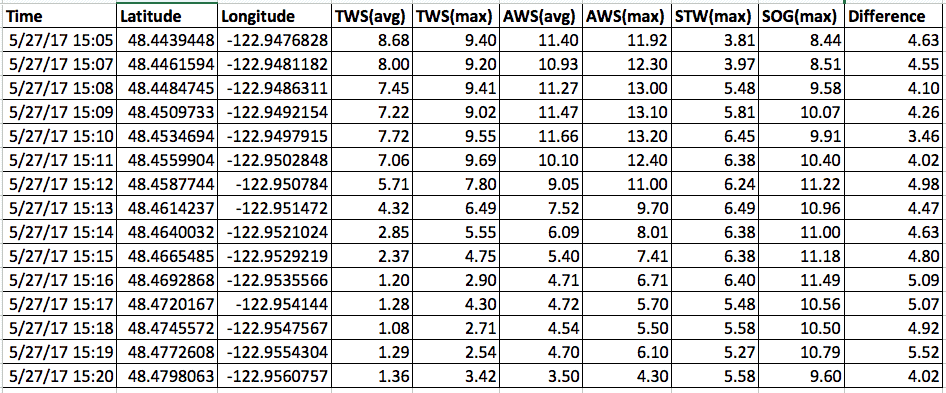
Cattle Pass YDVR 1 minute resolution
There was no time to take pictures or anything else, but the Yacht Devices Voyage Recorder that I had installed earlier in the year was happily logging everything. After focusing in on the timeframe we went through the pass, and doing 1 minute averages, you can see that the current ranged from 3.46 knots to a whopping 5.52 knots, at least using the Speed Through Water (STW) and Speed Over Ground (SOG) data from Grace herself.
We made it through OK, and I had the crew stand down from any emergency action, but I was really shaken and continued to marvel at how well the autopilot did. Since I replaced the old control head with the Raymarine EV1 package, I have seen more and more situations where it has done an excellent job in challenging conditions.
The rest of the hour journey to Friday Harbor went by fast, again because of weird currents and tides. Rounding Turn Island and even Brown Island were fraught with weird currents that sped us along at fast rates, and was causing havoc for others heading out. We found out later on that the “new moon tide” was stranger and more intense than many people had seen in the past.
Lesson learned – don’t try to go through Cattle Pass when you see weird things happening a day before, especially a new moon, and never when there’s a chance of more than 2 knots either direction.
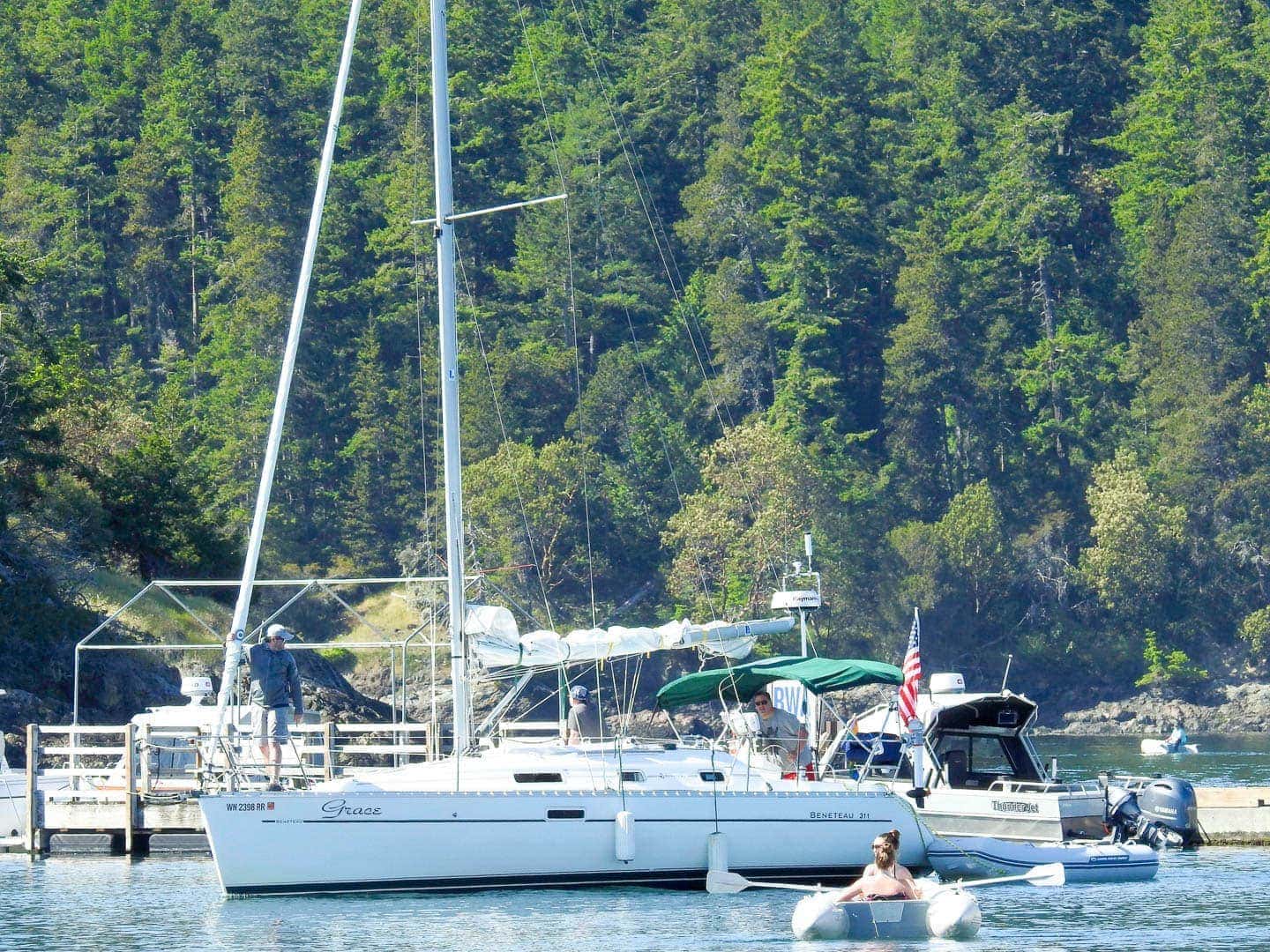
Grace arriving and avoiding traffic – courtesy Steven Roberts @ microship.com
We arrived to a very busy Port of Friday Harbor – it being Memorial Day weekend (Saturday) we expected some traffic, but this was unusually high. Steven Roberts of microship.com lives aboard at the Port and came out to take some pictures of us arriving, which we don’t often get!
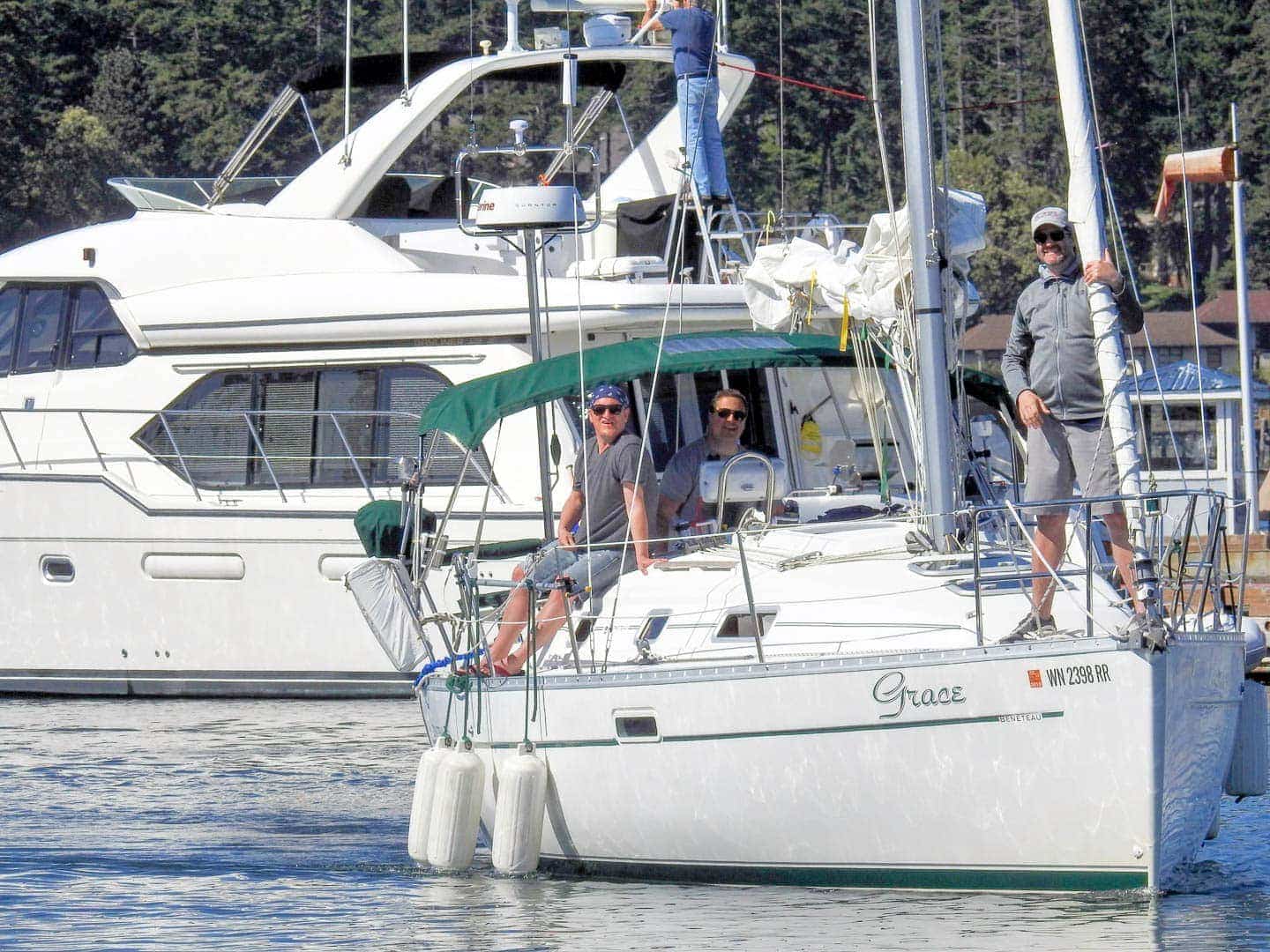
Almost at our slip – courtesy of Steven Roberts @ microship.com
We had scored a slip on C dock that proved to be very quiet and removed from the chaos on H / G dock. Docking was uneventful, and we proceeded to enjoy the 80+ degree day and the guys went in to town to check things out.
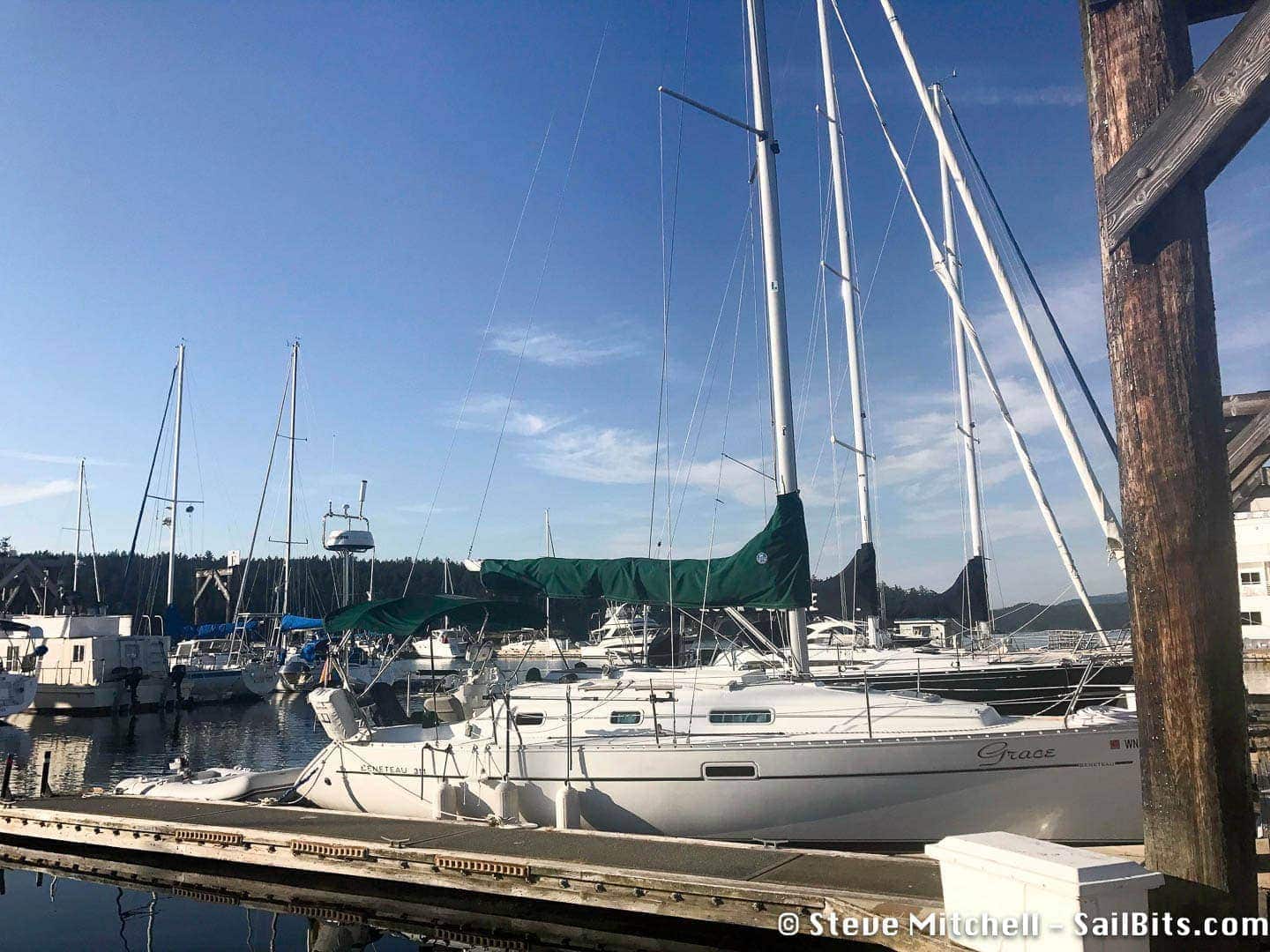
Grace moored on C dock at Port of Friday Harbor
The weather was spectacular through the holiday weekend, and the crew and I enjoyed meals on the boat and in town, and generally relaxed and had a great time.
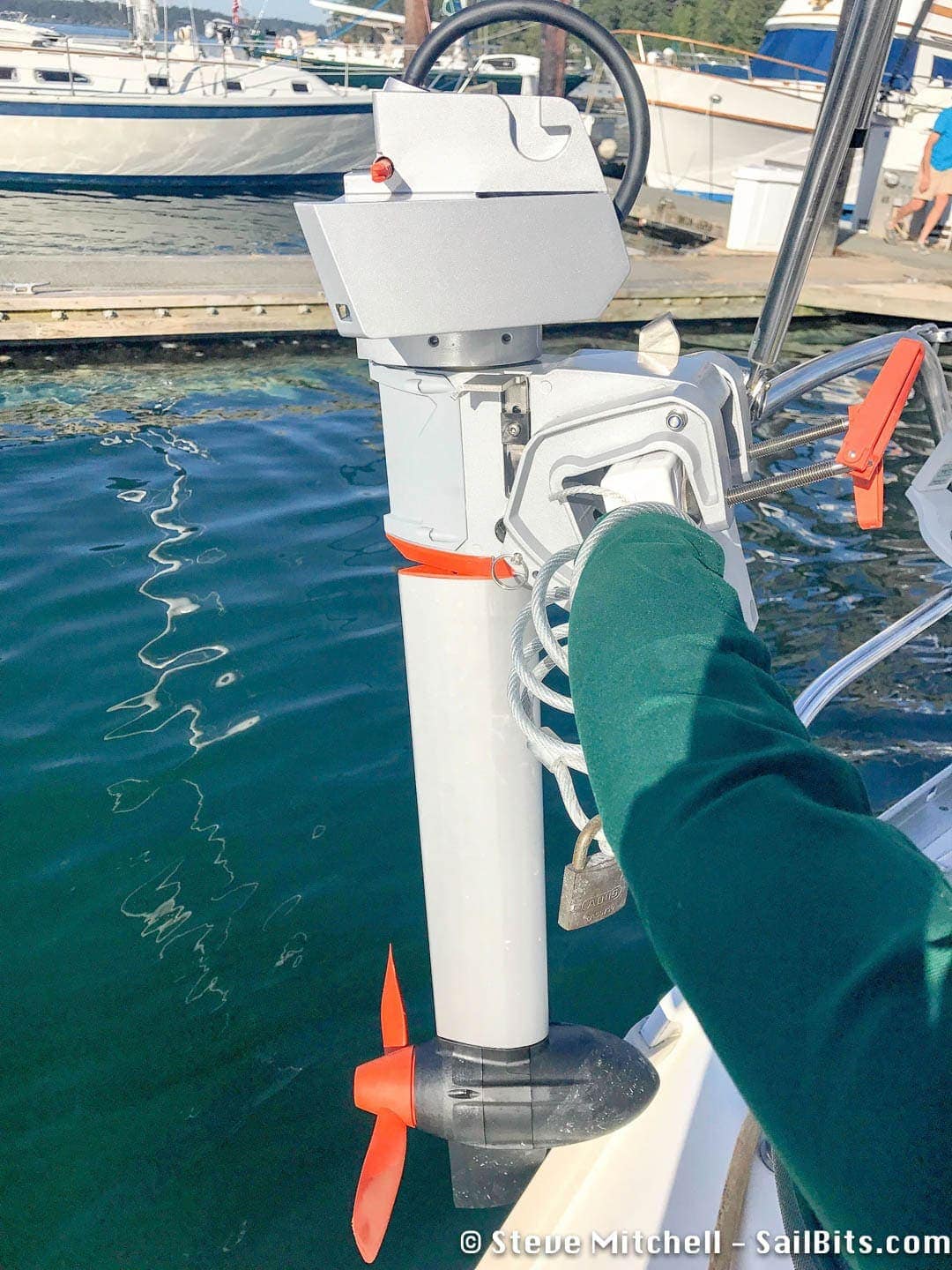
One of the new items added to Grace before the trip was a Torqeedo Travel 1003c outboard, replacing our Mercury 3.5 HP 4-stroke gas outboard. One of my favorite things in any marina is to poke around on the dinghy and explore the different boats, fairways, coves, and nearby items. The gas outboard has been my motive power of choice for years, but they always, always have problems. The Mercury that we had was only a year or two old, and had constant fuel problems no matter how vigilant I was. I’ll write up a bit more about this after some more time on the water, but everyone seems to love how quiet it is and how easy it is to use.
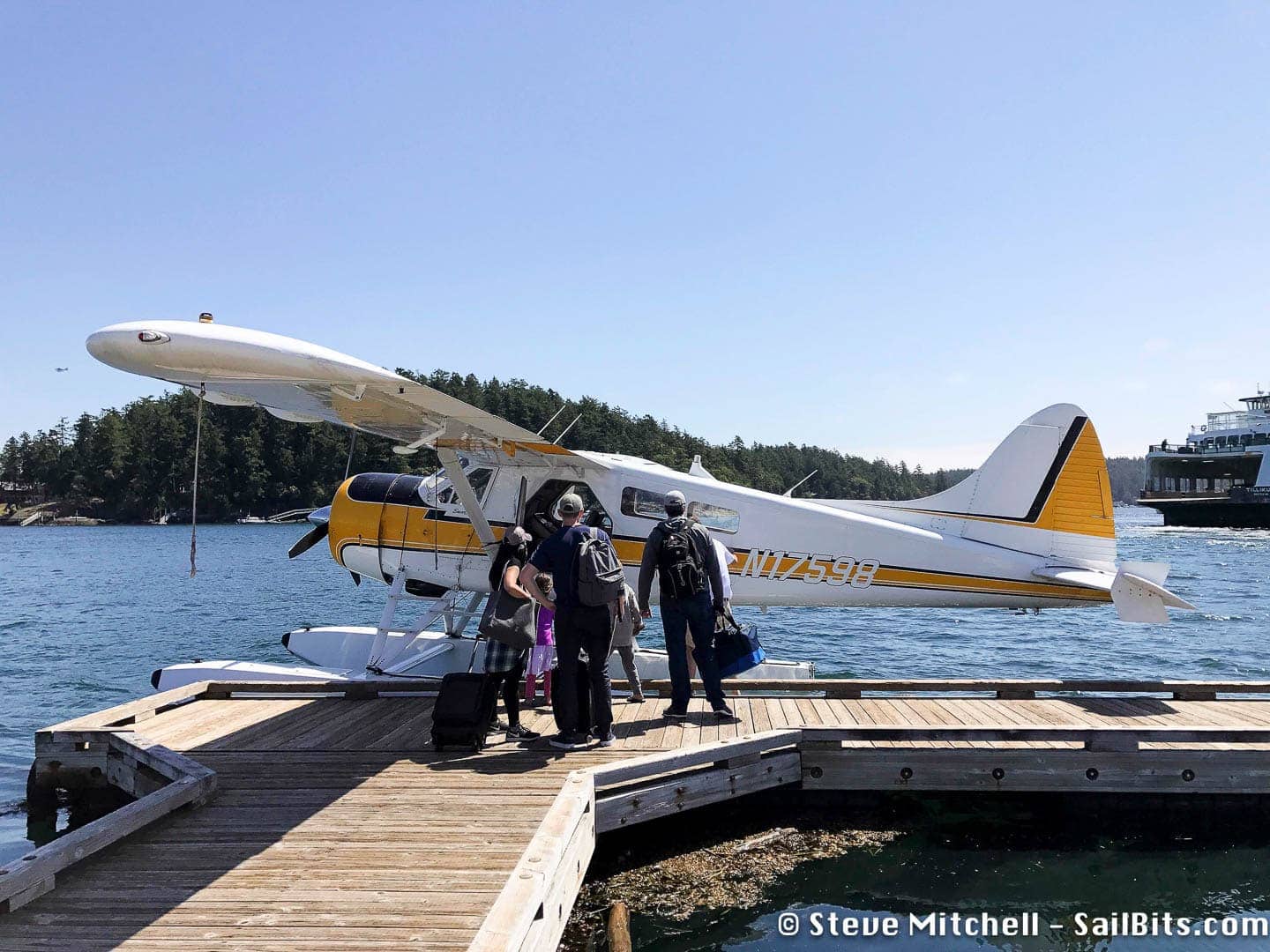
As I mentioned above, one of the great options for crew helping me get Grace up to the islands is to fly back home on Kenmore Air. Jake and JJ both flew back Monday (Memorial Day) and I was on my own until Friday.
I spent most of the days collaborating with Steven Roberts on various geeky projects, updating the Port of Friday Harbor WiFi network, and working on a ton of projects on Grace. The weather was not that great, with rain and winds every day, so I didn’t feel that bad that I wasn’t out on a mooring ball somewhere.
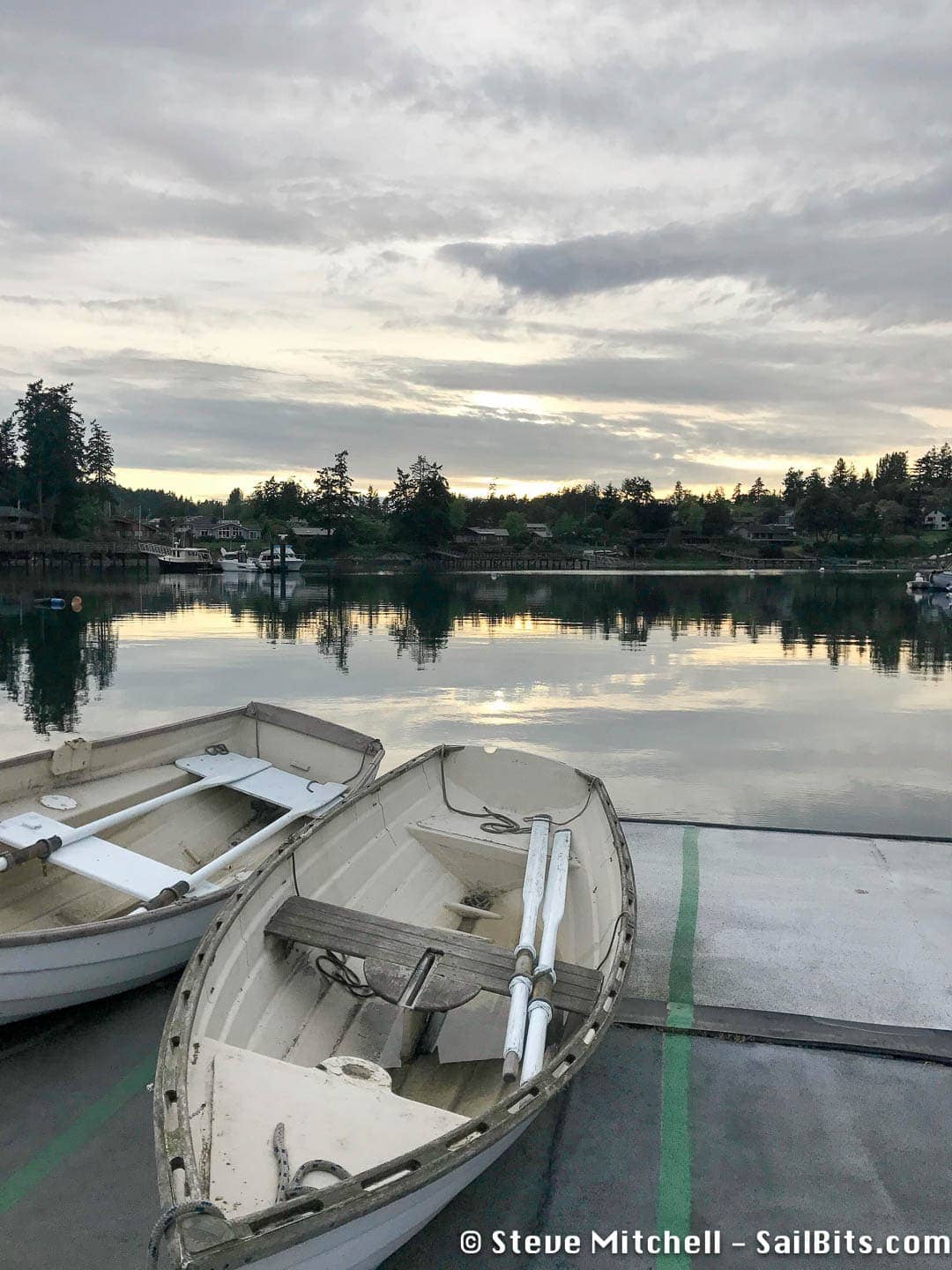
There were still some beautiful sunsets and moments even with the bad weather.

Other than scrapes and bruises to my own person, and some sore muscles from the projects I worked on, the only casualty was my trusty iPad. It had been my primary planning tool for all trips for over 2 years, and one evening after leaving Steven’s boat Datawake, I dropped it on the dock pier, just narrowly missing it tumbling in the water. But the damage was done, and it has been sent to the electronic recyclers. I just ordered a new iPad, and my timing was good since Apple just released a 10.5″ version, which should be a bit more screen real-estate for Navionics and other planning tools.
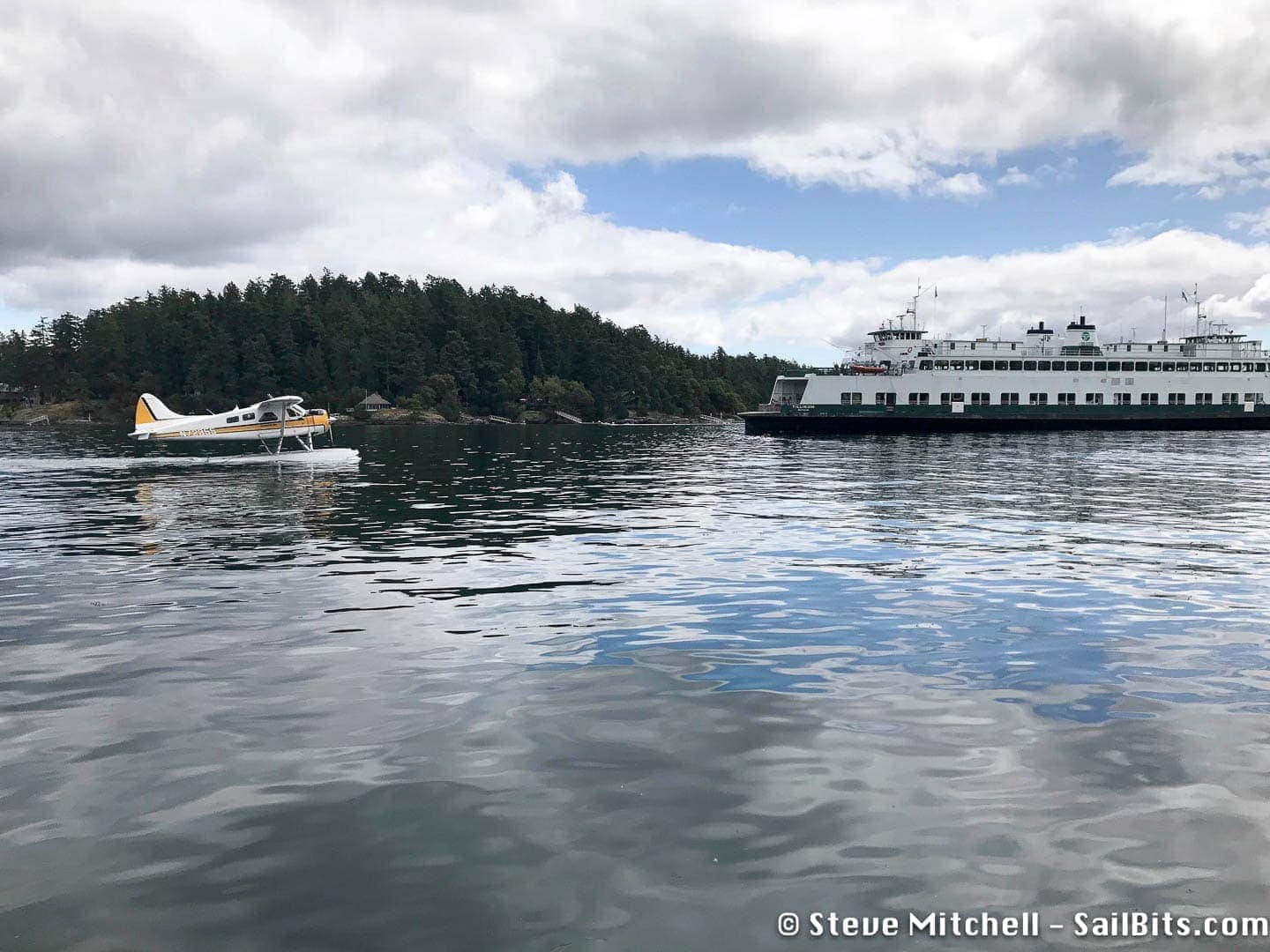
Husband Josh along with close friend Anna were the return crew for the voyage. It was Anna’s birthday only a day beforehand, and we were taking her on a cruise through the islands and back down to Seattle as a nice weekend getaway.
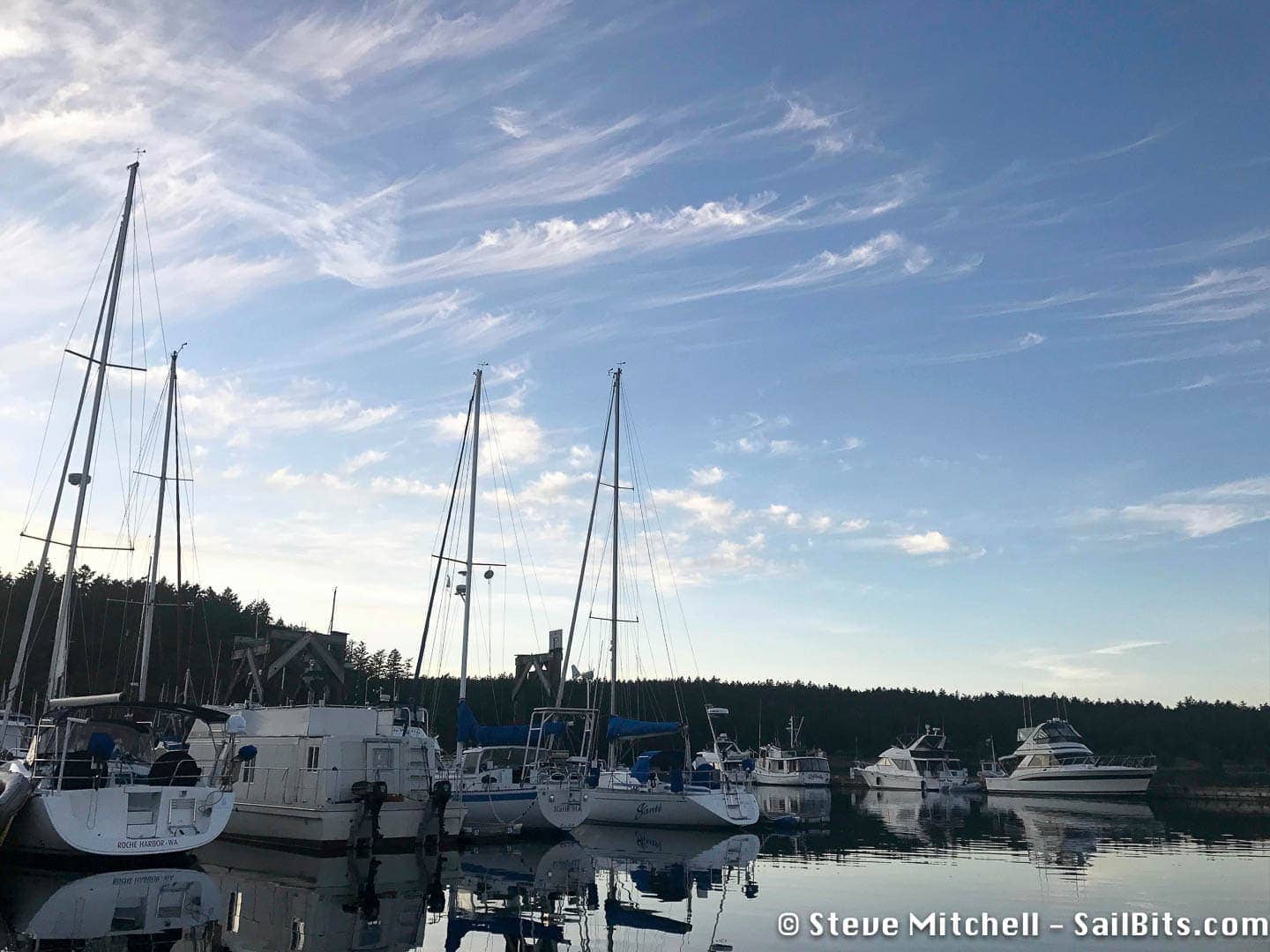
The weather looked good on Saturday to try crossing the strait instead of going the longer Deception Pass route, so we opted to explore town a bit on Friday and spend the night.
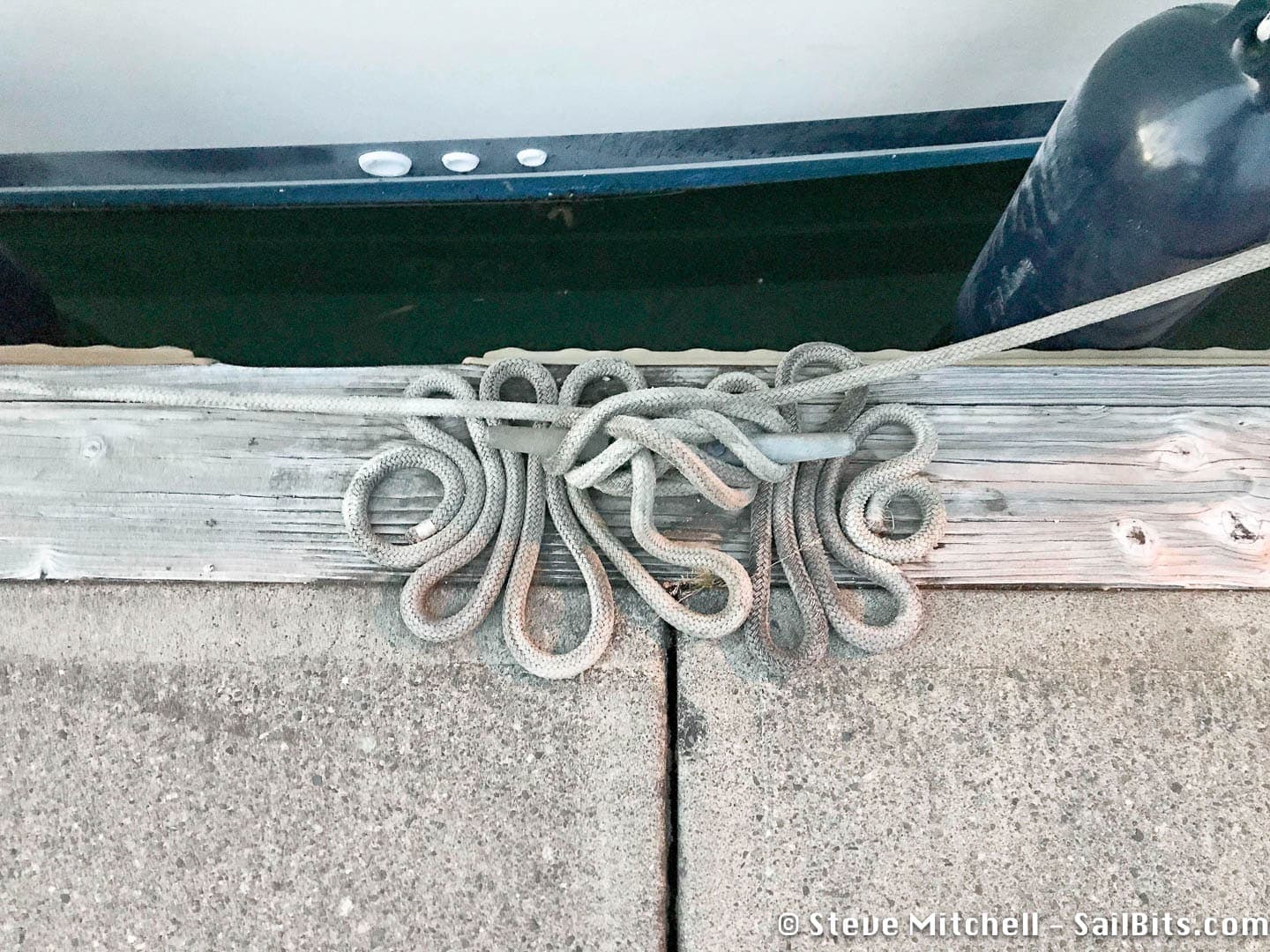
Rope art at Port of Friday Harbor
Josh noticed some interesting rope art near our slip at Friday Harbor – the crew generally makes flemish coils to make things look all ship-shape.

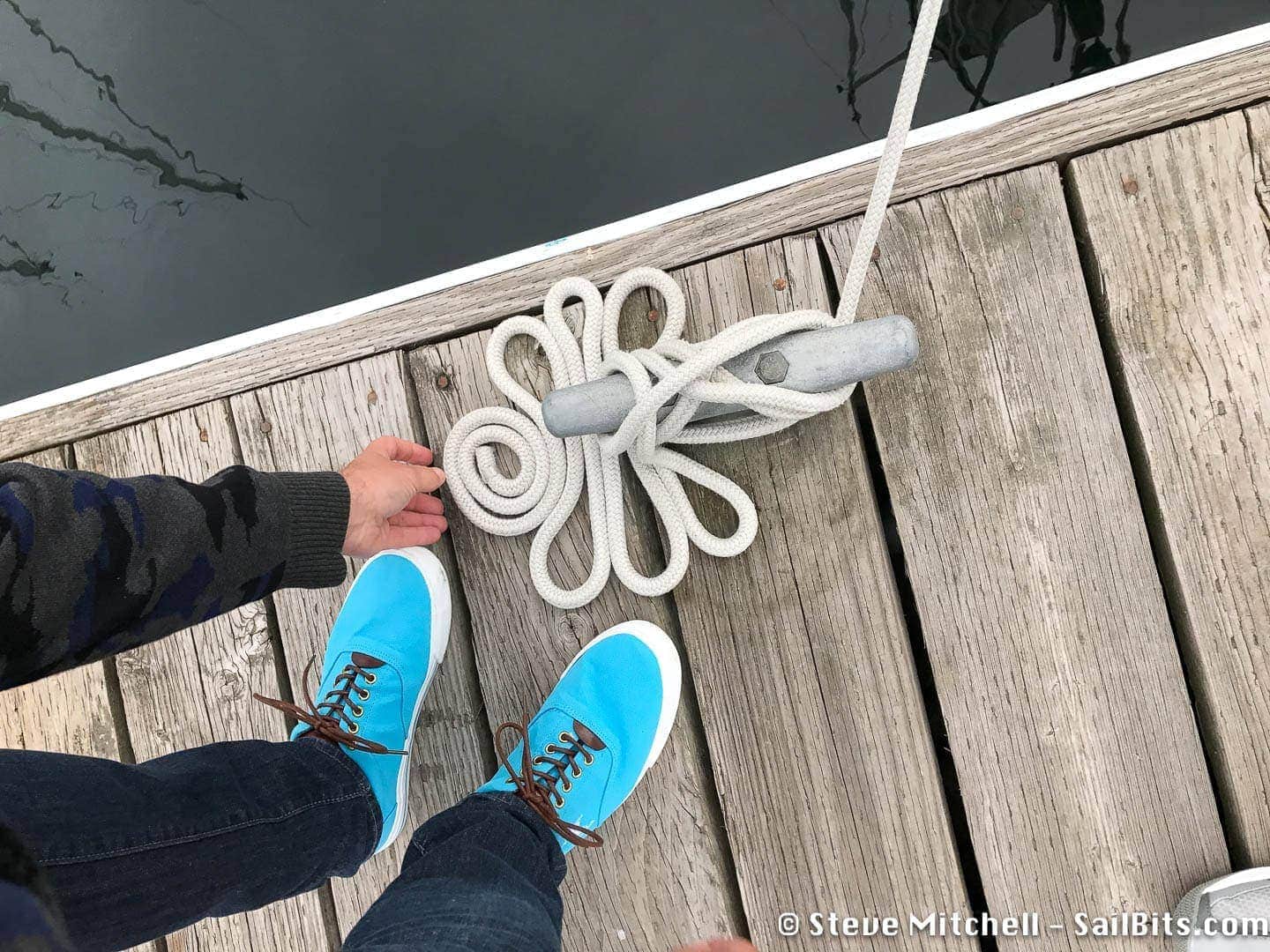
Josh’s rope art
A few more pictures and examinations and later in the day, Josh made his own art with our ropes. I think he’s set a new bar for the rest of the regular crew, and I have to say it looks a lot more interesting than the usual coils.
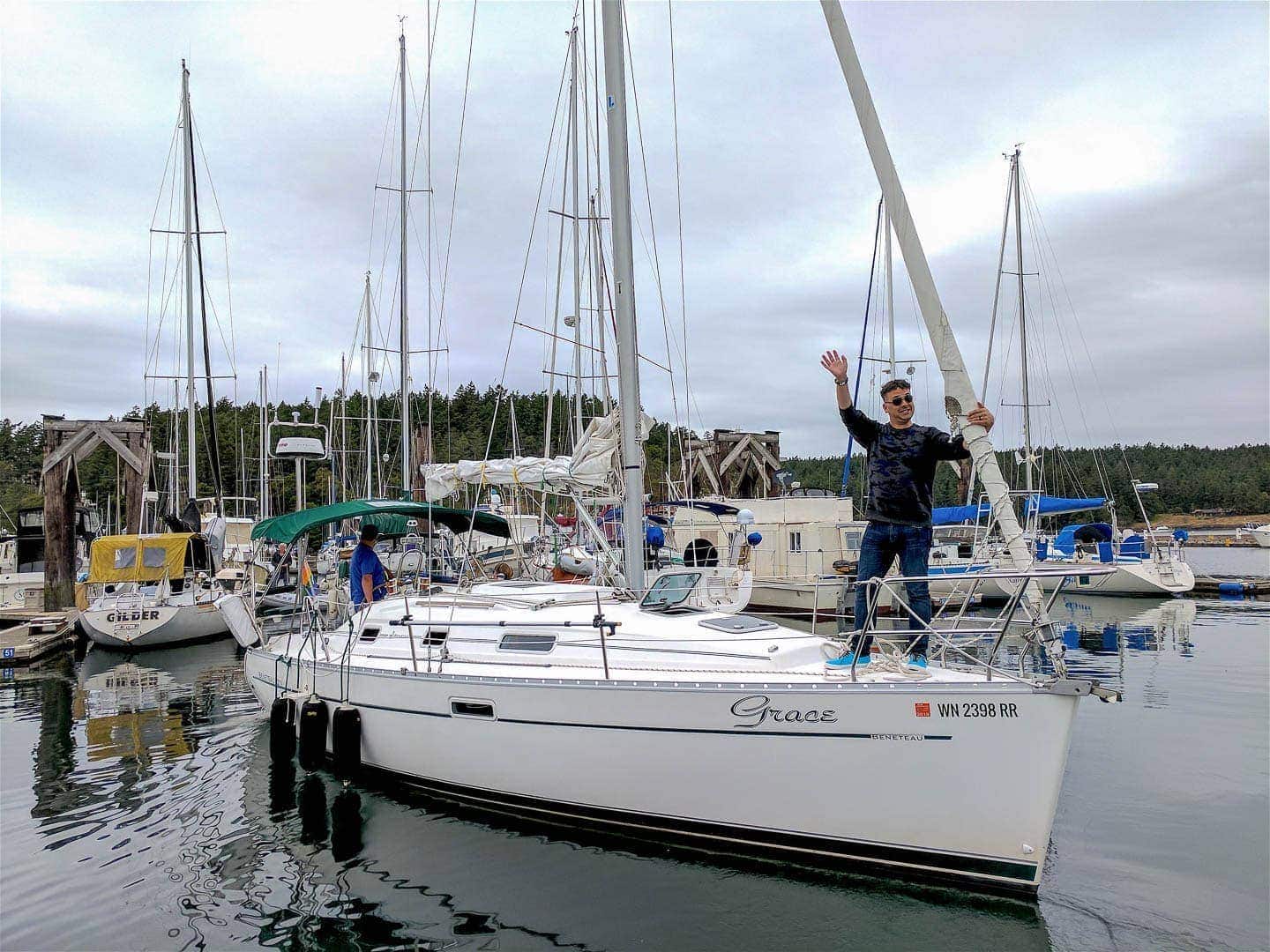
Grace departing Port of Friday Harbor – courtesy of Steven Roberts @ microship.com
After saying goodbye to Steven, and gathering up all of the project bits and pieces, we departed for the trip home. The weather was much colder than the last week, and not a bit of sun to be found when we departed.
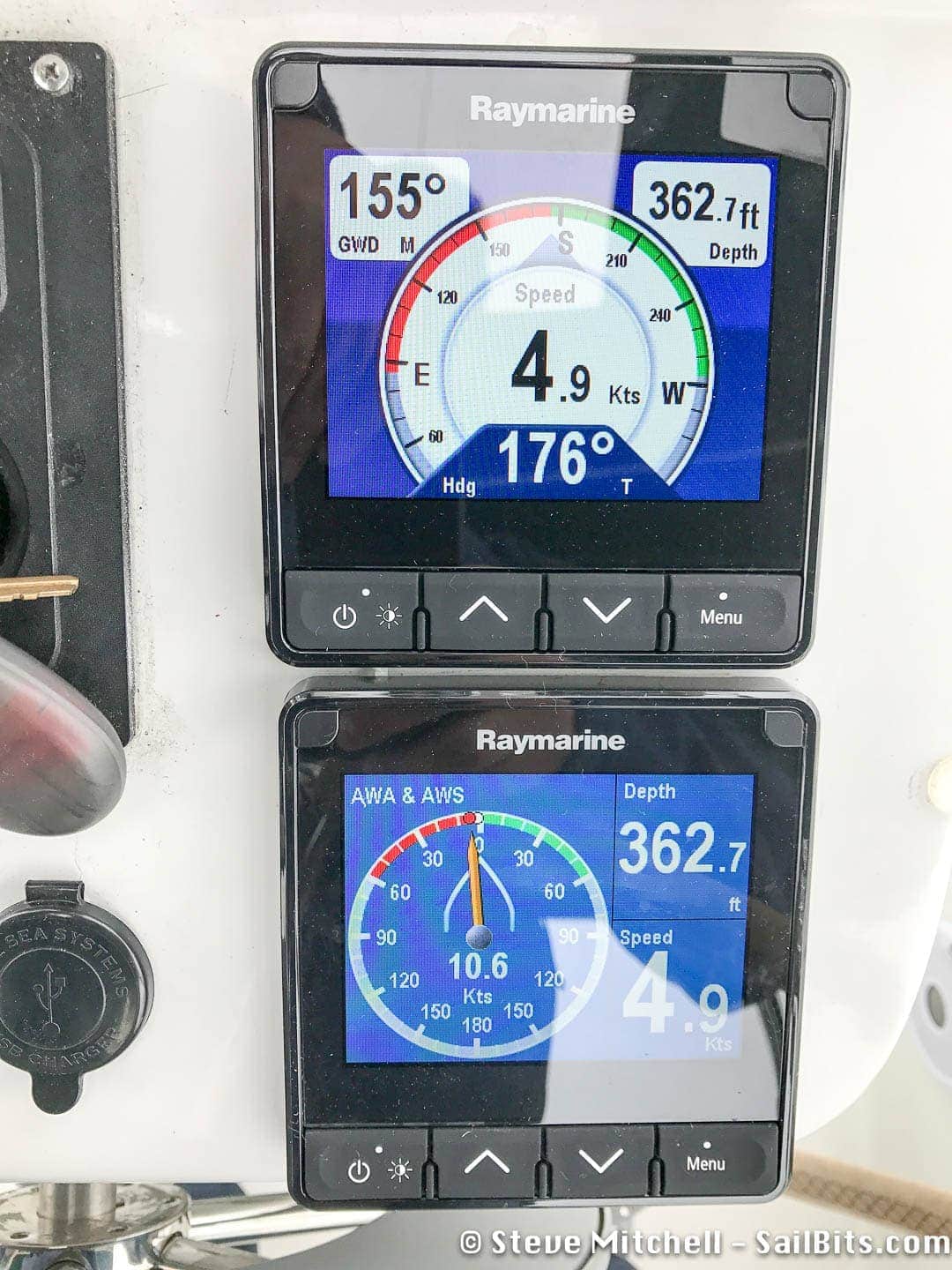
Raymarine i70s instruments
One of the projects I completed was to install the new Raymarine i70s displays, replacing the ST60 displays that came with Grace, and were probably installed when she was built in 2000. One the ST60s was not displaying any useful data, as the speed/depth sensor was replaced recently. The other is hidden in the space below for now as it is still processing wind information, and putting it out onto the NMEA 2000 network. The new displays are very useful, and allow for a lot more data to be displayed at specific times. I’ll write up more about them after some additional usage.
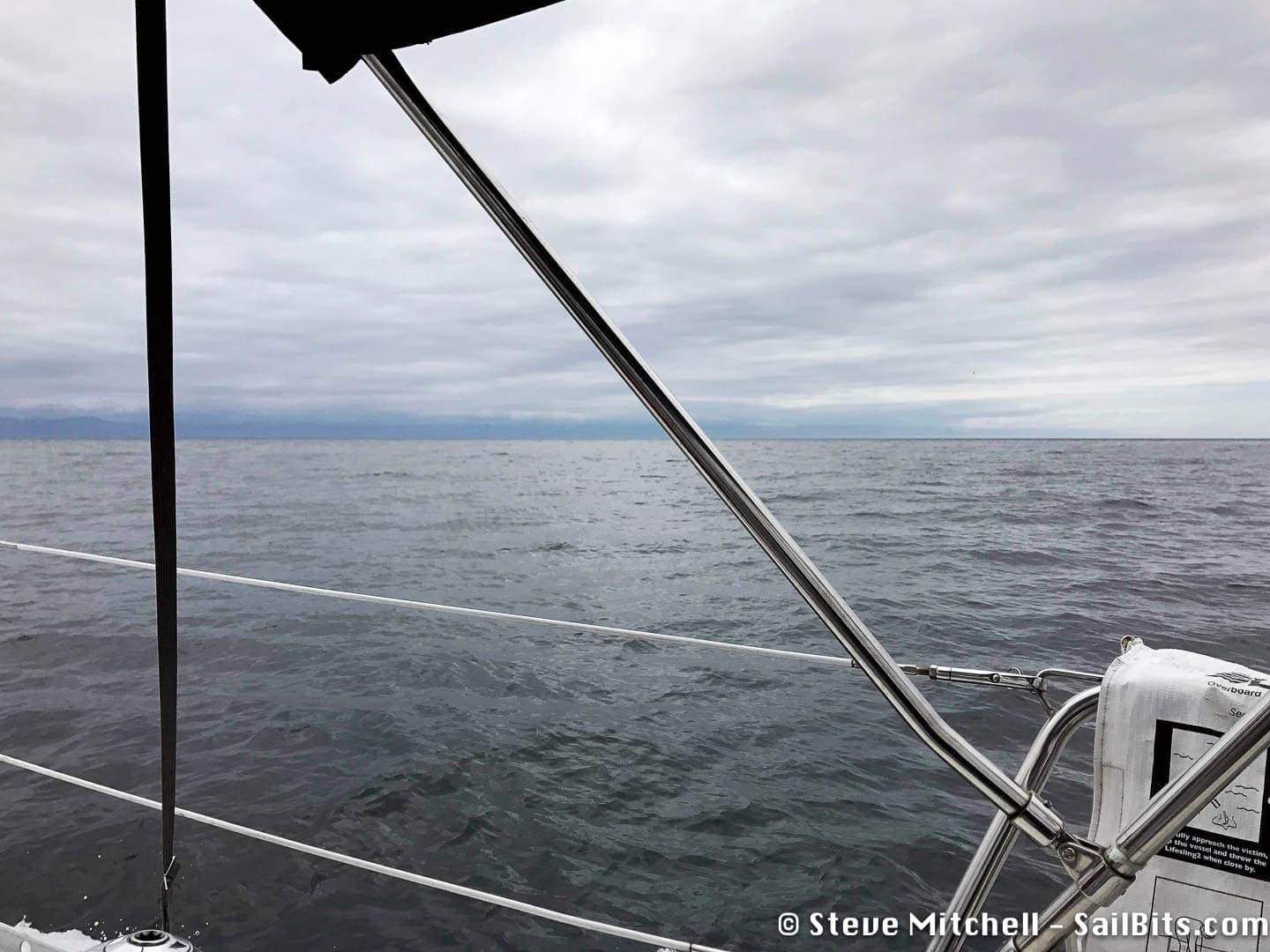
Going back through Cattle Pass was not an issue, and the strait was also pretty boring, although the waves built as we got closer to Smith Island – 2 feet with an occasional 3 footer thrown in – all on the stern quarter, making for a barfy ride. The wind was not cooperating either, so we had to motor most of the way.
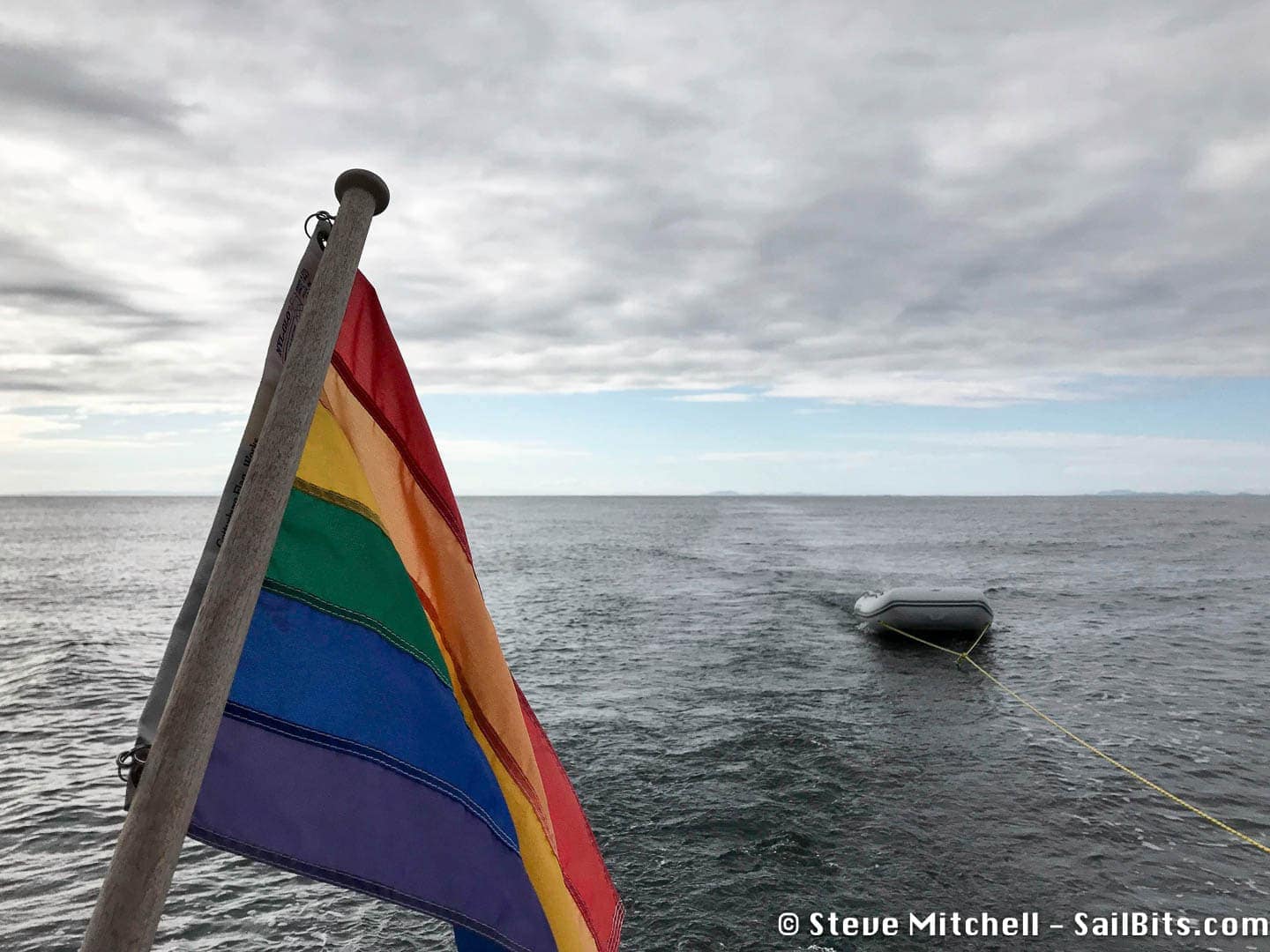
Sequim cap
As we got closer to Port Townsend, we saw sun all around us, but clouds directly above us. A sailor at the Point Hudson marina said something about a “Sequim cap” which I assume refers to the persistent clouds we saw above.
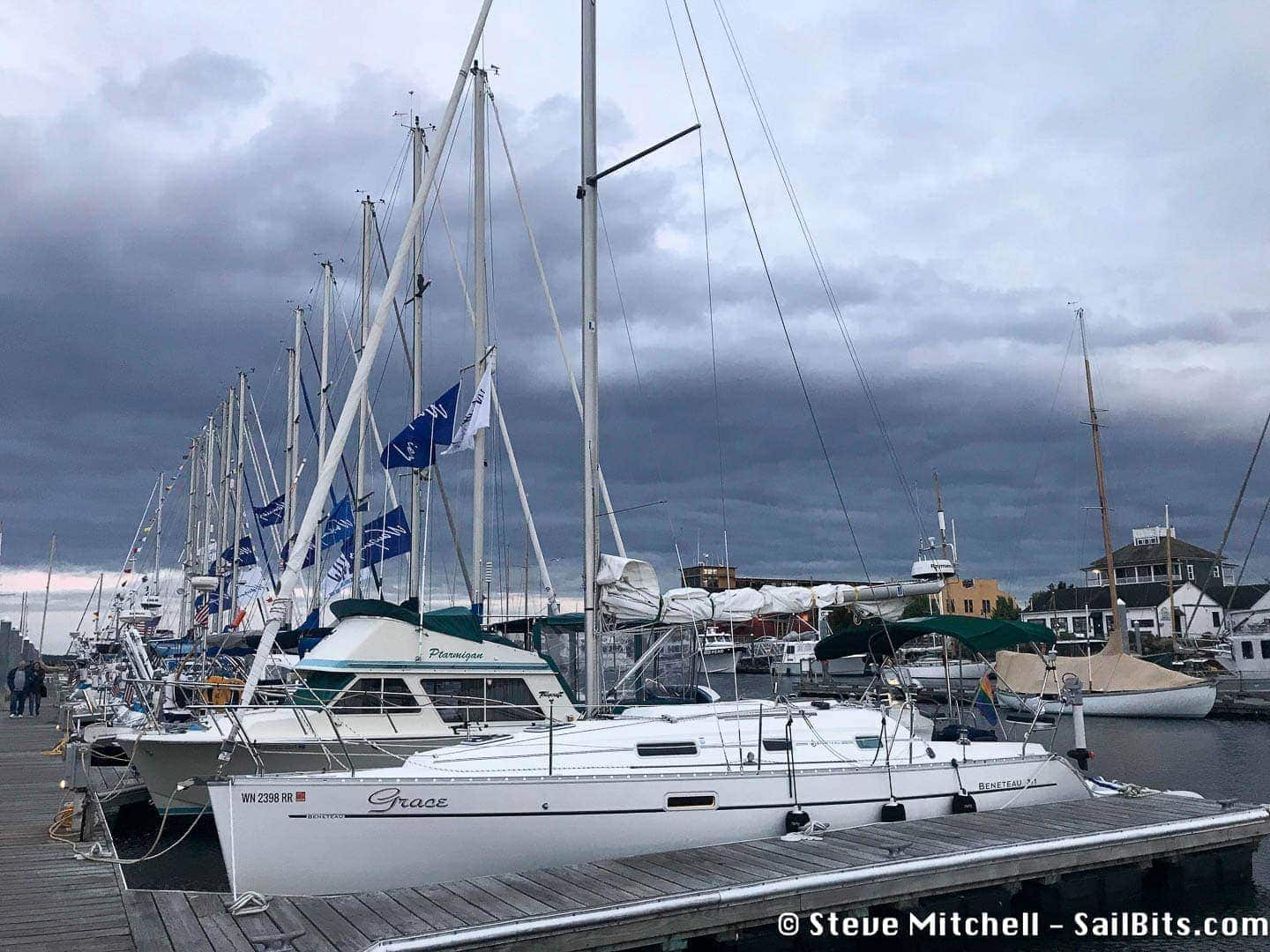
We arrived at Port Hudson marina around 6pm and tied up deep in the basin, with no boats next to us on the port side. There was a rendezvous for Wauquiez owners taking up almost the entire marina including a boat from our home marina that recognized us. I hadn’t done much research on this brand, but boy do they look well built and appointed!
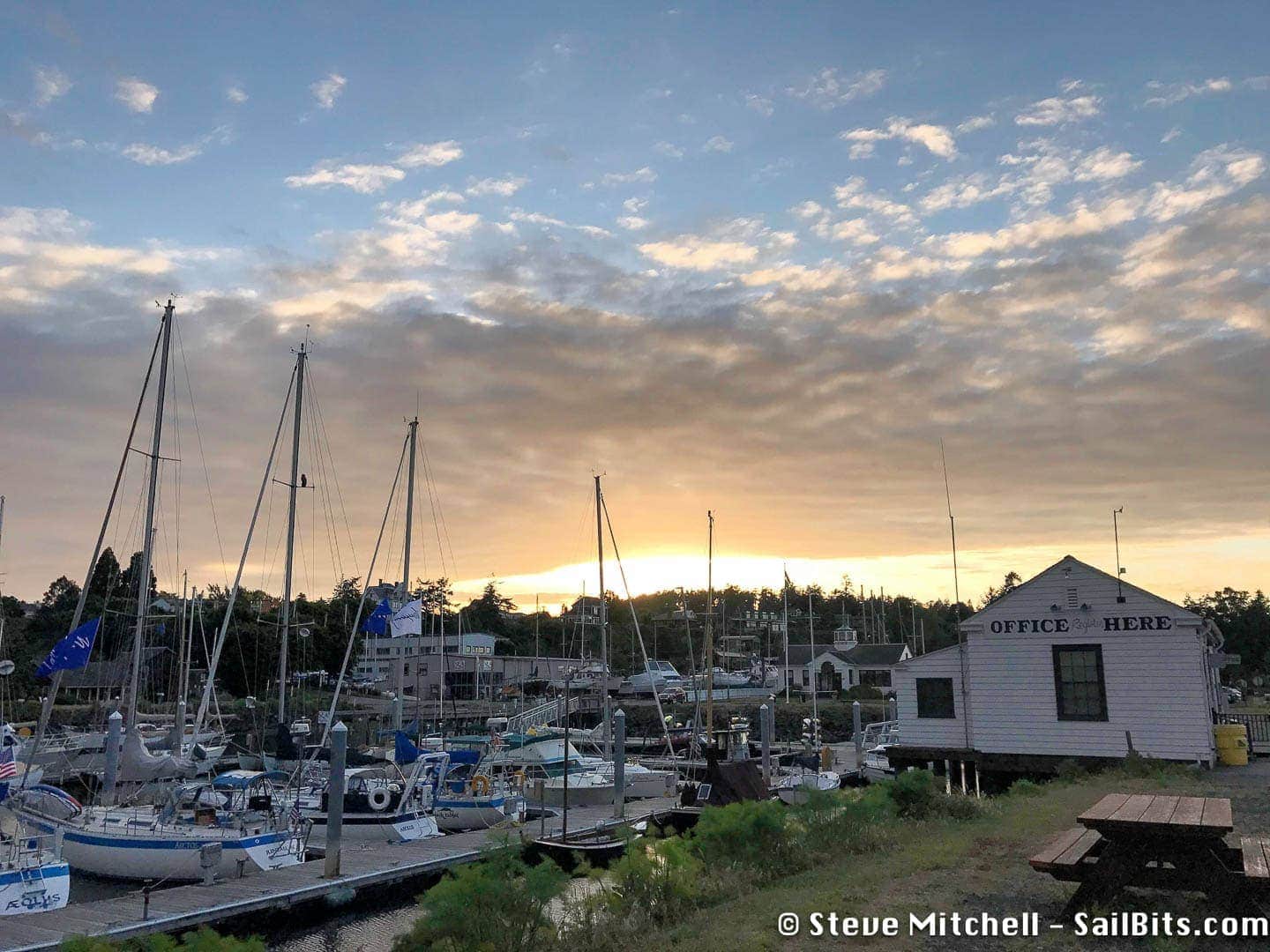
The sunset was spectacular from the marina, including a bit of those pesky clouds. The winds picked up in the evening, driving the temps even further down, but the bigger challenge was the 20 knots gusting to 25 in the marina, coming directly over our port side with no protection all night long. We bounced more here than I have at anchor in recent memory, and I didn’t get much sleep. The forecast was for 35 knot winds gusting to 40 in the strait later on Sunday, along with some of that spreading down Admiralty Inlet, so I opted to get going by 9AM.
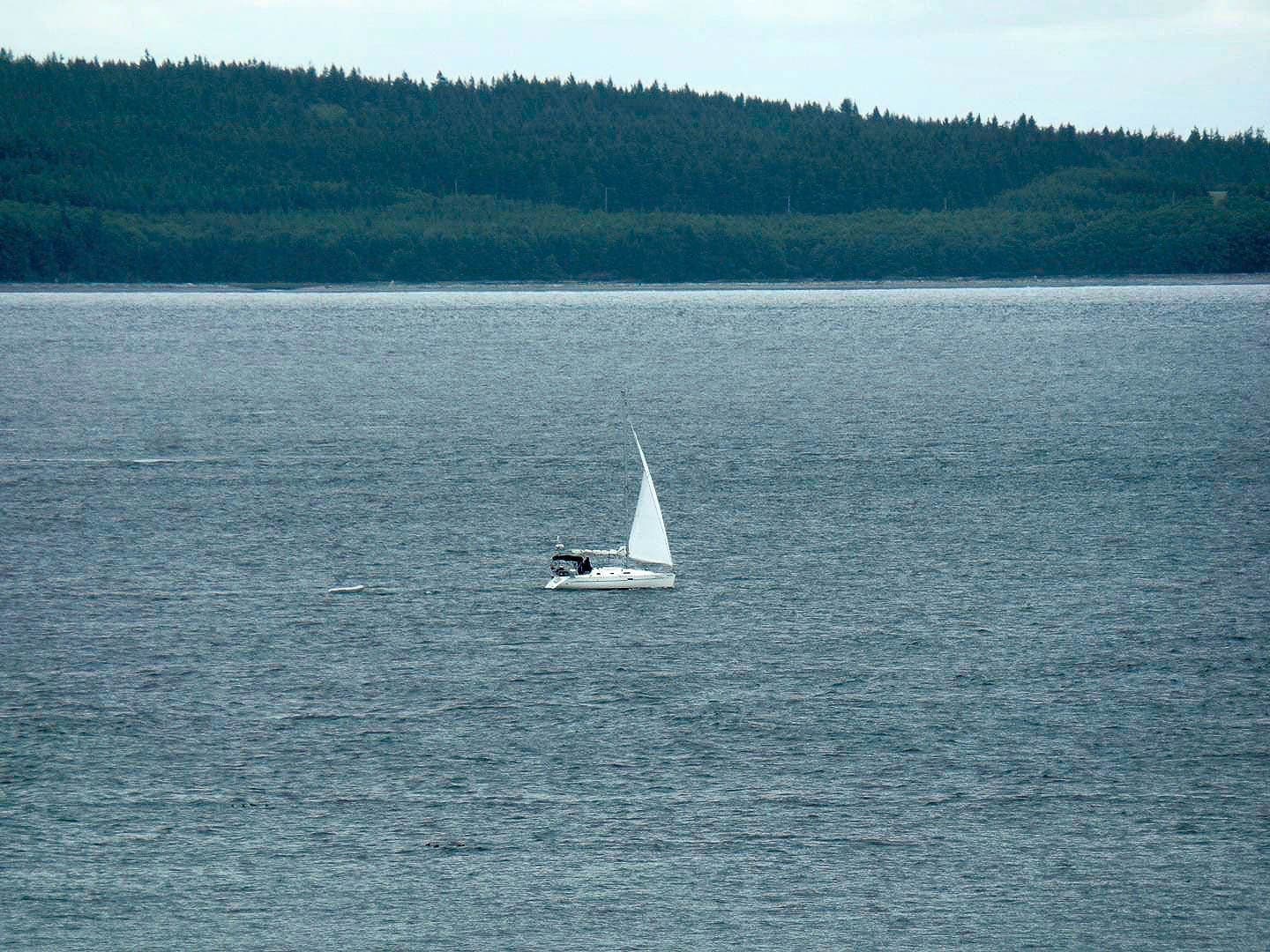
Grace from Fort Flagler – courtesy of Stacey Crofoot
A friend was camping at Fort Flagler, and after exchanging some messages, she was able to snap a few long distance pictures of us passing by after we pushed through the tides at Marrowstone Point. I had also timed our venture down Admiralty and further to take advantage of as many currents as possible, and we were skipping along here at around 8 knots.
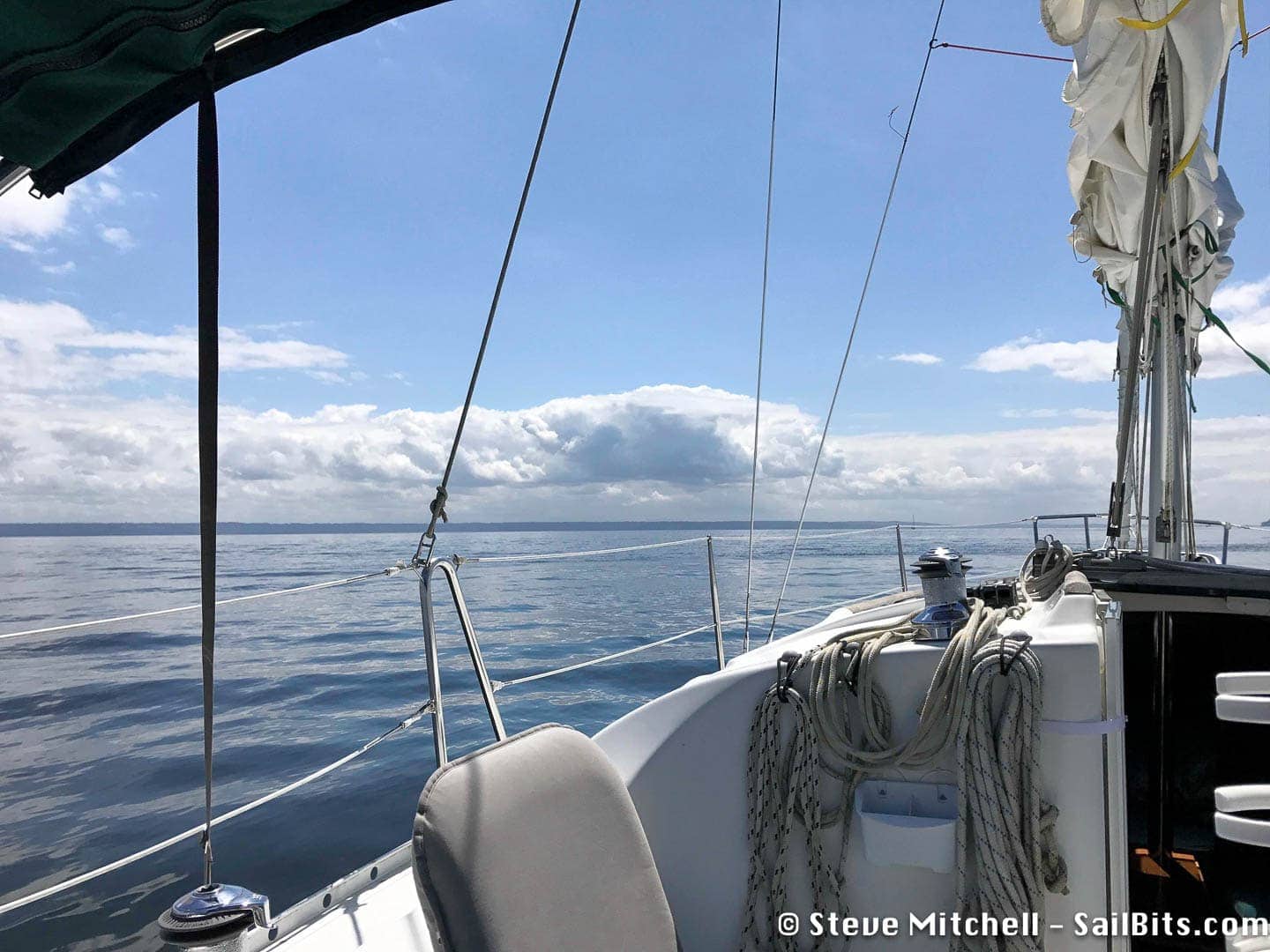
Sunday quickly developed into a beautiful day with much sun, some clouds around the mountains, and decent temps. The wind was absent for most of the middle part of the day, but we still enjoyed the sun.
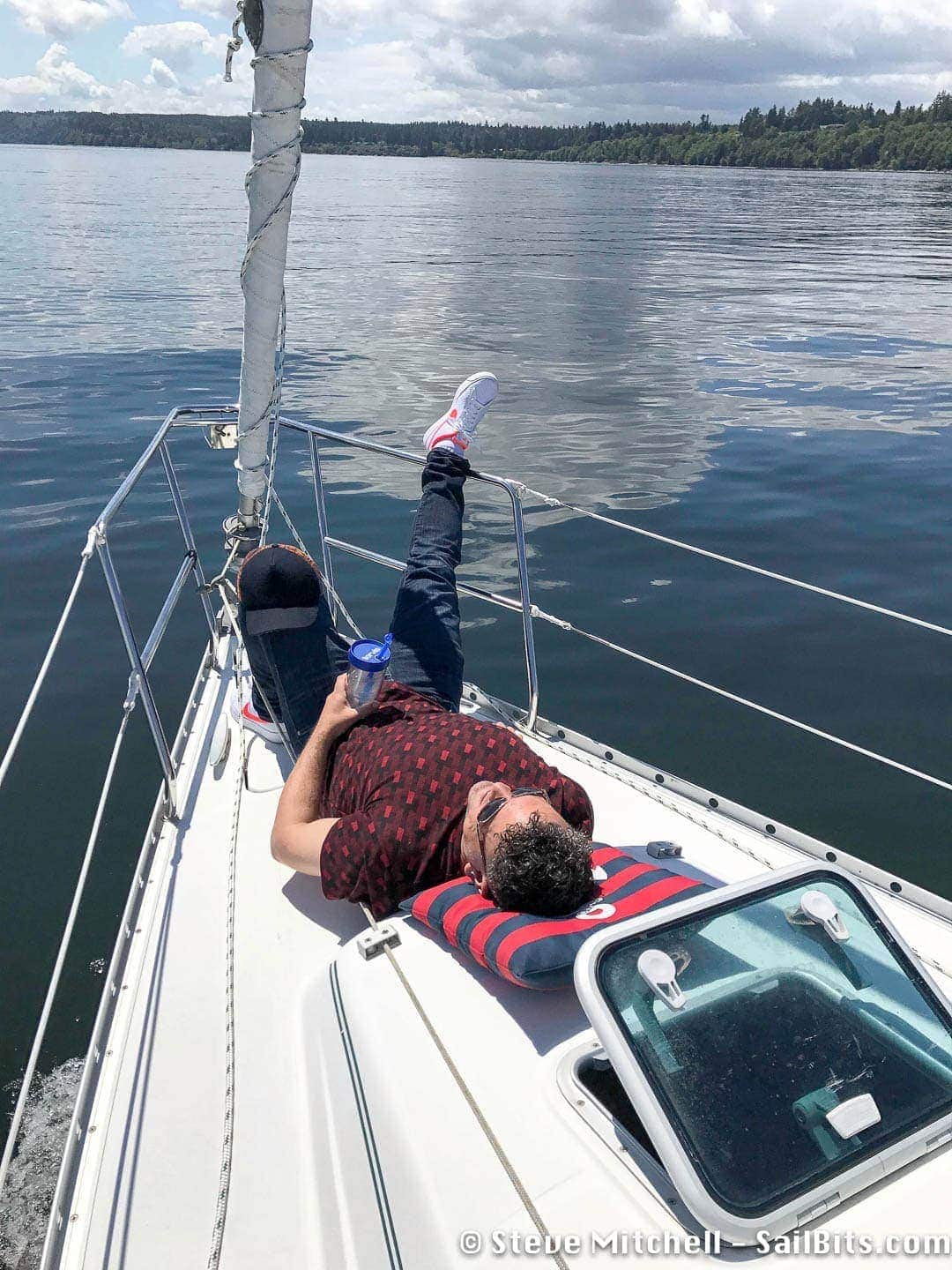
With the Beatles playing on the radio, Josh found a nice spot to relax on the glassy water near Kingston.
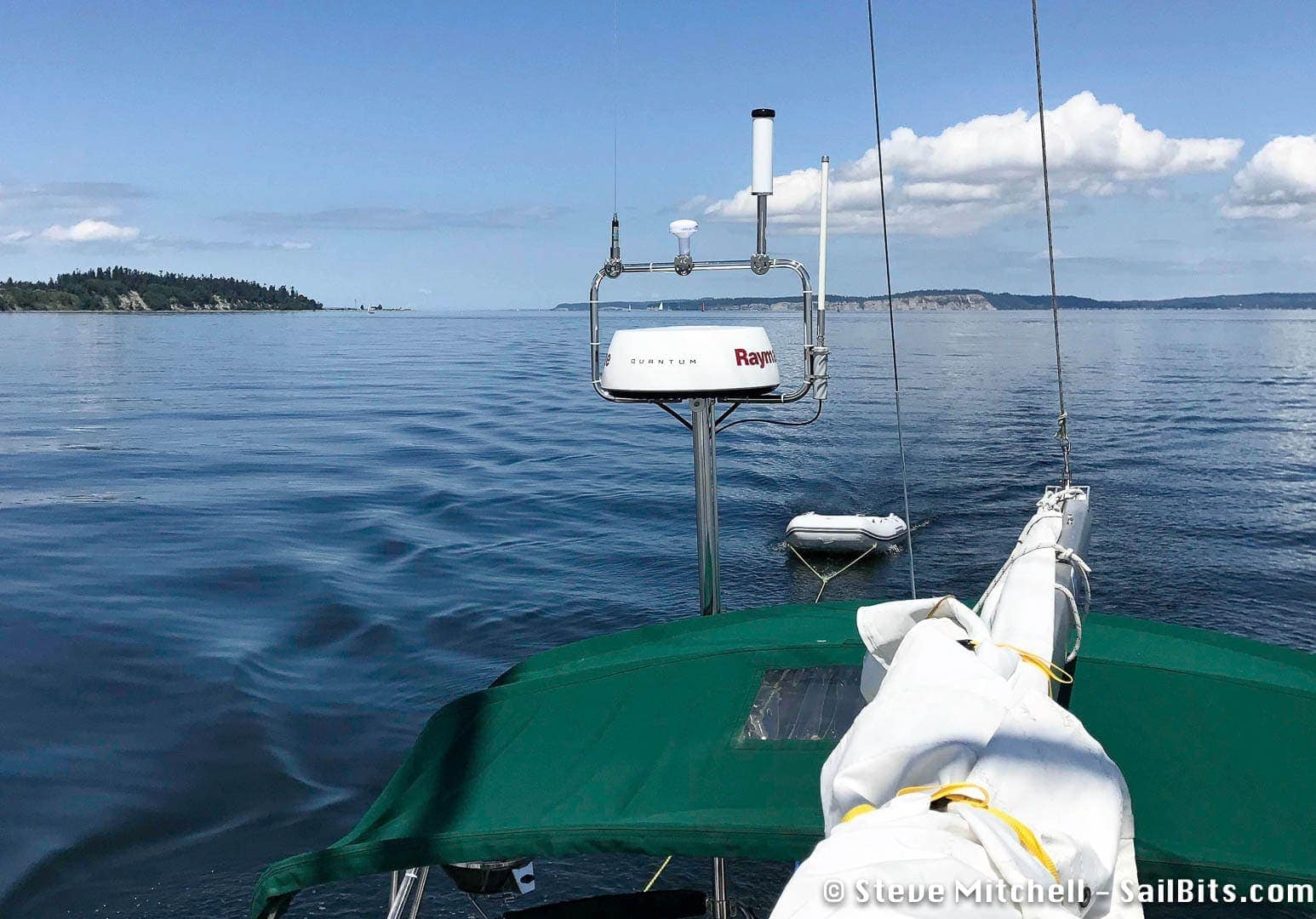
The radar arch has started to collect items as part of the project leading up to this trip – this is another post I am working on outlining the radar itself, but also all of the items I was able to move/consolidate with the arch. And yes, I’m aware the wifi antenna (on the far right) is not positioned well.
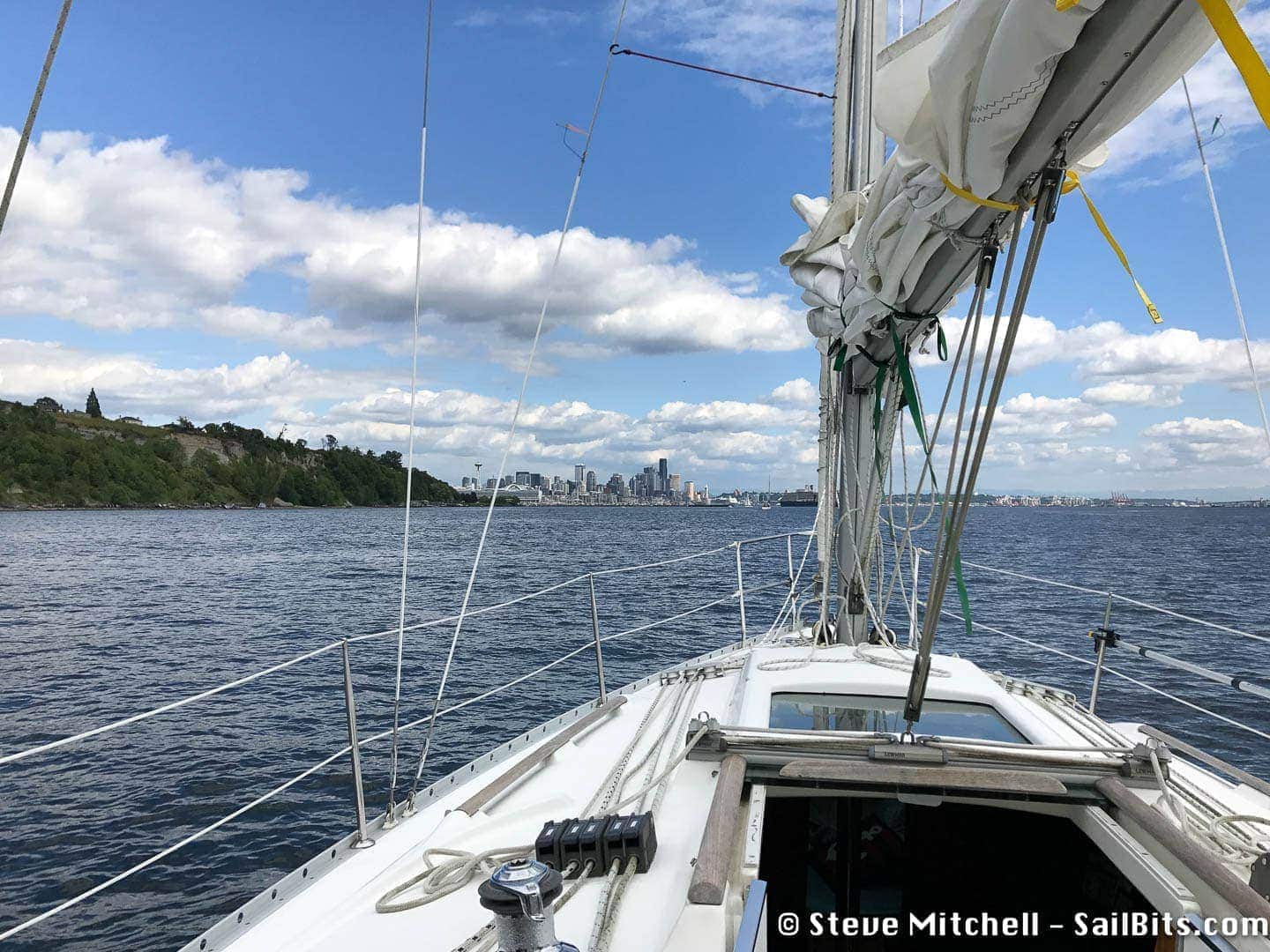
Arriving back in Seattle after 11 days
It was great to be able to visit Friday Harbor for a week, spend time with local folks, friends on the way up and back, but it was also really nice to see home after being gone 11 days. The number one thing I missed was my normal sized shower.
Trip Stats
Total distance: 131.09 NM
Distance Seattle -> Friday Harbor: 65.24 NM
Distance Friday Harbor -> Seattle: 65.85 NM
Average speed: 8.09 knots
Pretty similar courses coming and going, and I will take an 8 knot speed any day on a 6 knot boat!
Can’t wait for the other longer trips planned this year, and to finish writing up all of the other projects I’ve been working on.

